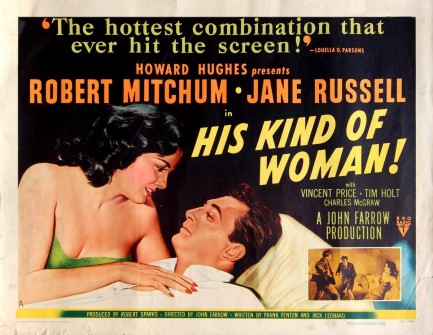 Russell sets the screen aflame in one of her iconic roles. 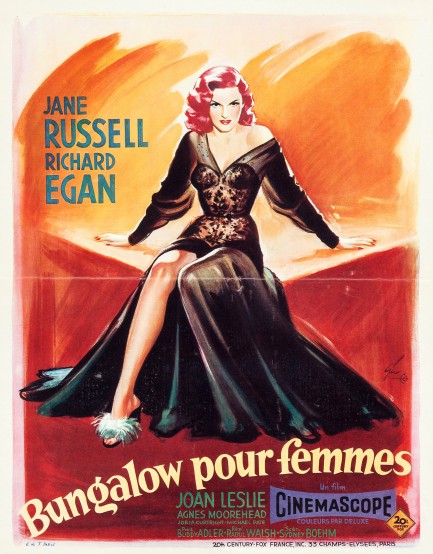 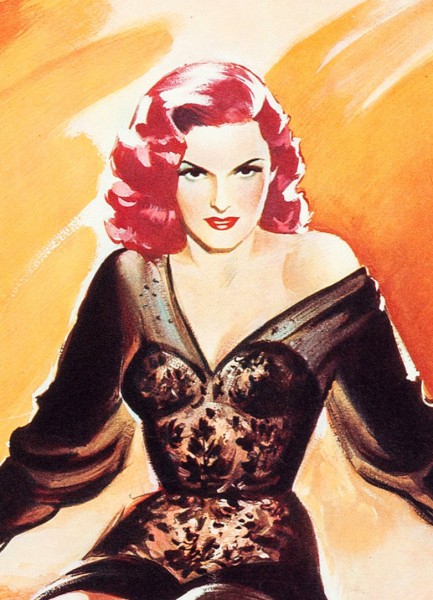
This French promo for The Revolt of Mamie Stover, which opened in Paris today in 1956 after being retitled Bungalow pour femmes, is yet another fantastic effort from the brush of Russian illustrator Boris Grinsson. Jane Russell starred in the film, and we especially like the poster's emphasis on her red hair. We talked about Mamie Stover as well as its complicated source novel last year. Check here for the movie and here for the book. We'll put together a larger collection on Grinsson later.
 Jane Russell poster reveals more to citydwellers than to heartlanders but in the end it's all the same. 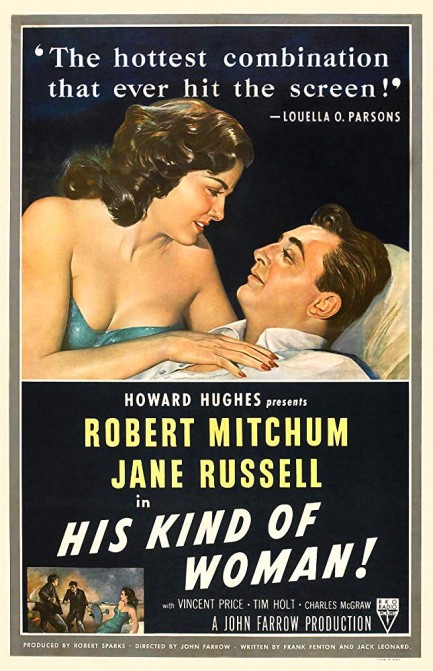 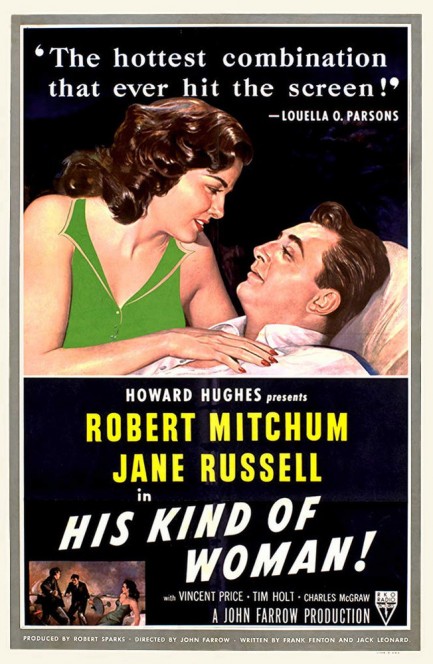
We already talked about the Robert Mitchum/Jane Russell film noir His Kind of Woman, which premiered in the U.S. today in 1951. We recently stumbled across the above curiosity. You may remember our exploration of overlays in mid-century pin-up art (fascinating examples here, here, here, here, and here) and as it turns out, Russell received similar treatment. The cover-up on the second poster isn't an overlay. It's printed onto the paper. But the result is the same. Cleavage be gone! If we had to guess, the modest poster probably was issued everywhere in the U.S. except large cities. But the thing is, such a clumsy reworking—as opposed to just using a different image of Russell entirely—clearly serves to tell viewers they've been denied something, which we suspect was almost as effective at drawing traffic into cinemas as revealing what was covered. But only almost. Which is why at Pulp Intl. we always reveal everything.
 Touch a hot Stover and you'll get burned. 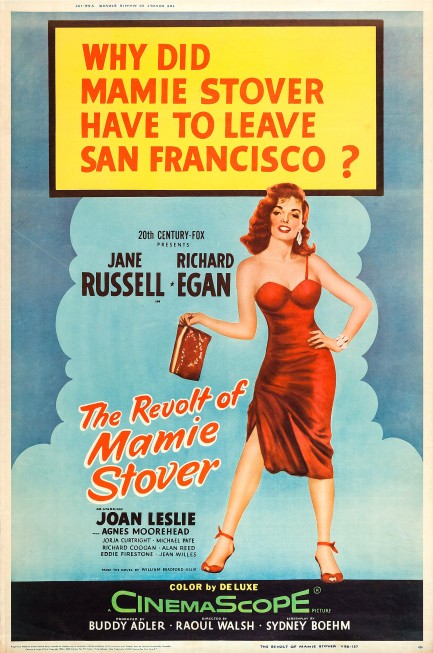
Above is a promo poster made for the Jane Russell drama The Revolt of Mamie Stover, which premiered in Honolulu today in 1956, and was sourced from William Bradford Huie's novel, a book we discussed at length some months back. The movie was directed by Raoul Walsh of Casablanca fame. He's properly credited on the above art, but for some reason on the second poster, which you'll find below, his name appears as Walsh Raoul. It's a weird mistake to get past so many studio eyes, but things like that happen, we guess. The U.S. art is uncredited, but the third poster, also below, was made for the film's British release and that was painted by Jock Hinchcliffe. He wasn't a noted stylist whose work is especially sought after today, but he did paint numerous posters, and he signed the piece below. Anyone who did that gets singled out here, because so few artists were credited by the studios.
Regarding the movie, needless to say, the challenging themes of Huie's novel were turned on their head by Hollywood. Mamie is no longer a racist toward Hawaiian islanders—in fact, the one islander character who gets to speak is bigoted against her. And she's no longer a prostitute but a hostess who induces men who frequent Honolulu's Bungalow Club to buy more booze and pay extra for private time. That private time takes place in a rattan decorated sideroom, but there's no bed evident. Instead there's a table and two chairs, so apparently men pay just to chat with Mamie, and the other women at the club. There's a sexual implication, but of the barest sort, because obviously Twentieth Century Fox could not have made a movie about Jane Russell prostituting herself 51,840 times—the exact number given in the book.
The Revolt of Mamie Stover is another example of suppressed sexual themes during the mid-century era, which is a big reason why we extend our purview at Pulp Intl. into erotic films and imagery—because in our era the previously unshown can be shown and openly examined. We've discussed this before. If you watch the movie, it's interesting to ponder the presumed maturity of book readers, who were asked point blank to consider a prolific prostitute the protagonist of the story, as opposed to cinemagoers, who were never presented with the possibility. In any case, the screen version of Stover, while not a sex worker, is at least a very knowing character, and Russell certainly has the sneer needed to pull off portraying a romantically cynical money worshipper determined to reach the top tax bracket no matter what it costs—her or others.
We figure anyone who has what it takes to get rich for simply, er, chatting with men deserves wealth, and indeed Mamie gets her money. That's not a spoiler, because it's never in doubt. It's part of the revolt—her resistance against forced membership in the underclass. The question is whether she can retain her newly gained higher status, and whether she can preserve the love she's stumbled upon along the way, because in American cinema moneyseeking characters must choose between their fortunes and their souls. That choice is supposed to supply the drama, but we think the movie is more interesting for its proto-feminist feel and class discussion. It's pretty good on all fronts, though, except that co-star Richard Egan is a bit of an empty shell. But he doesn't ruin it. How can he? He has Russell to carry him the entire ninety-three minutes.
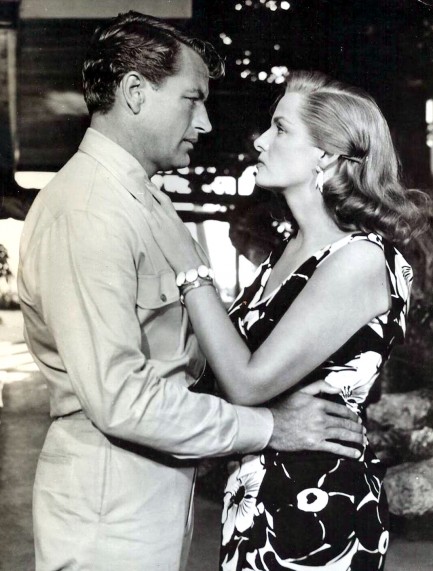 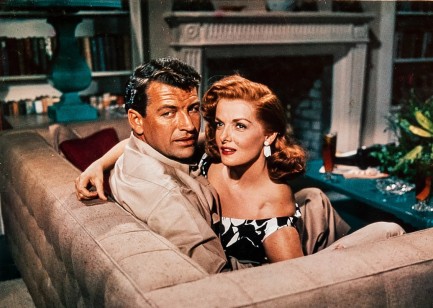 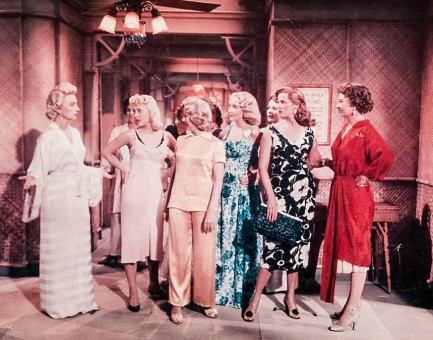 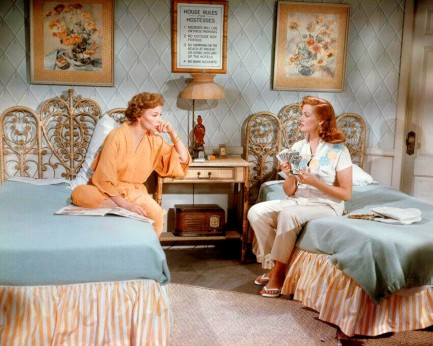 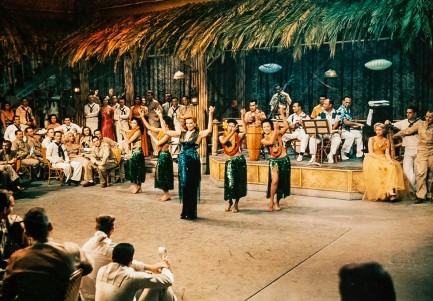 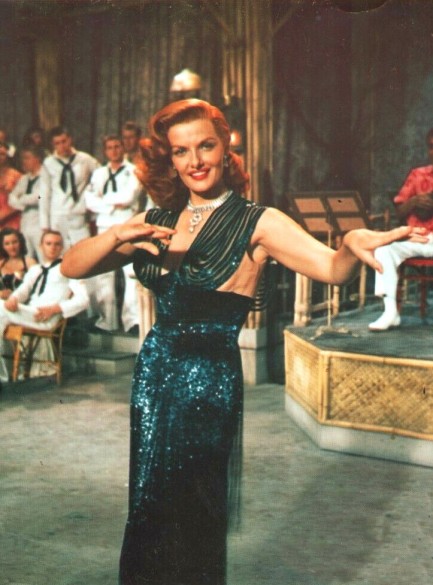 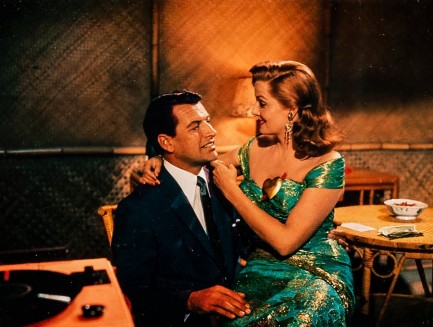 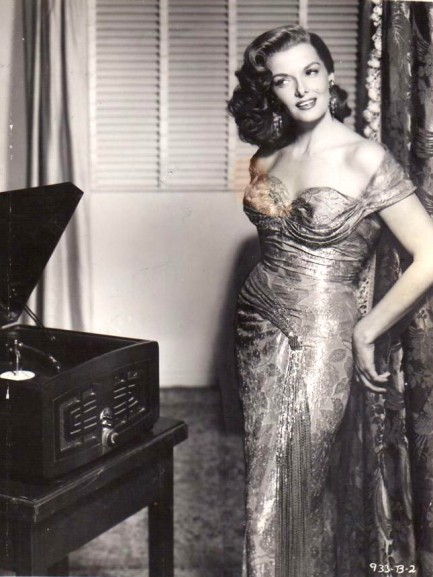 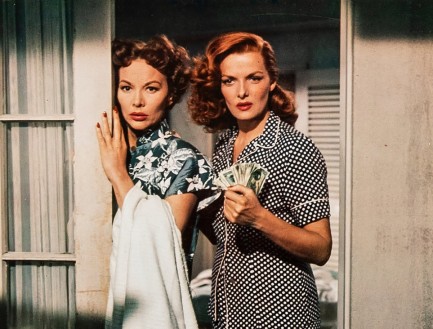 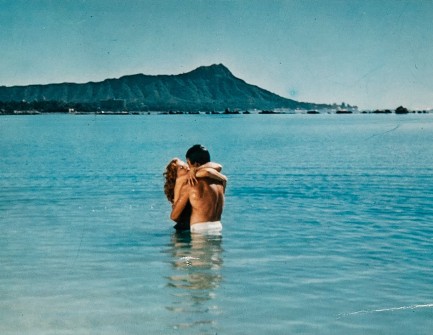 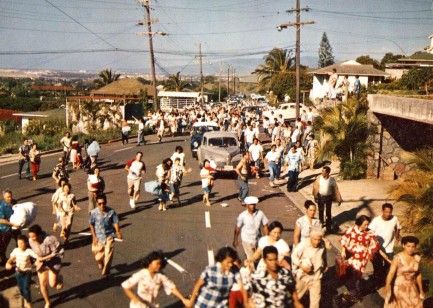 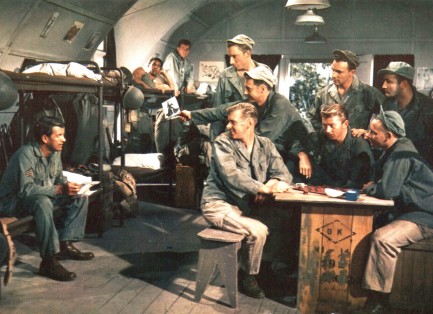 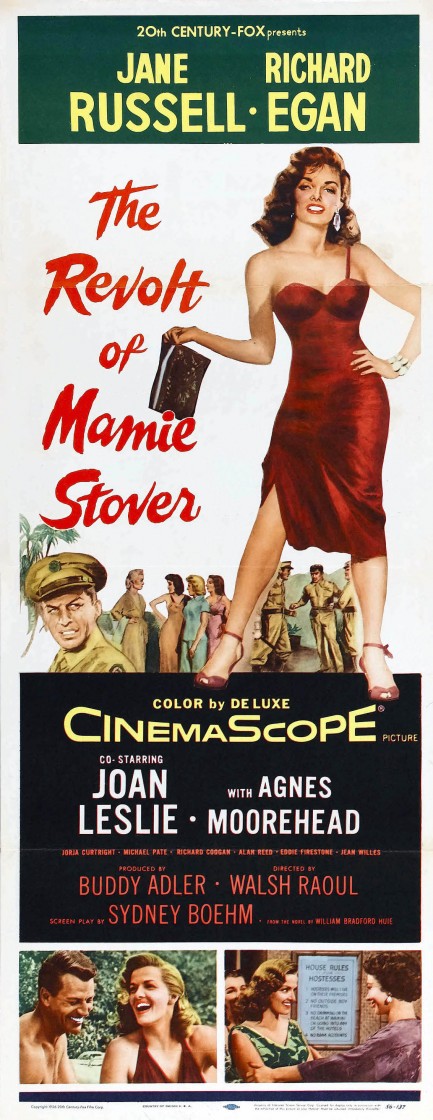 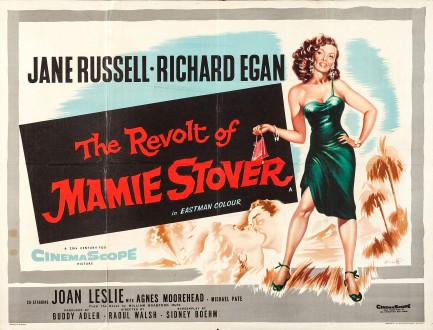 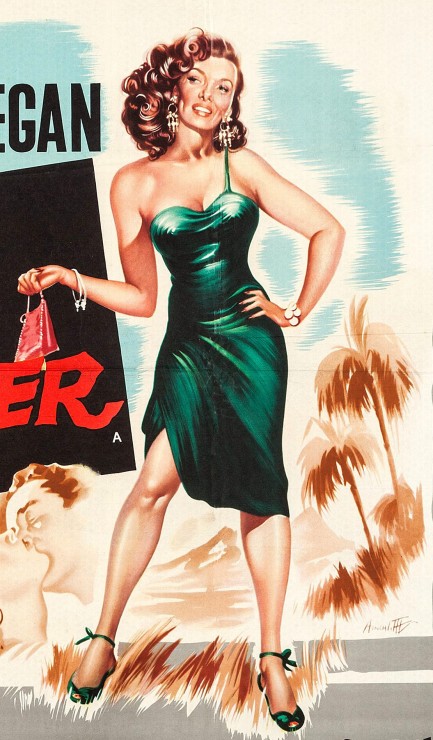
 Who needs a good script when you have Mitchum and Russell? 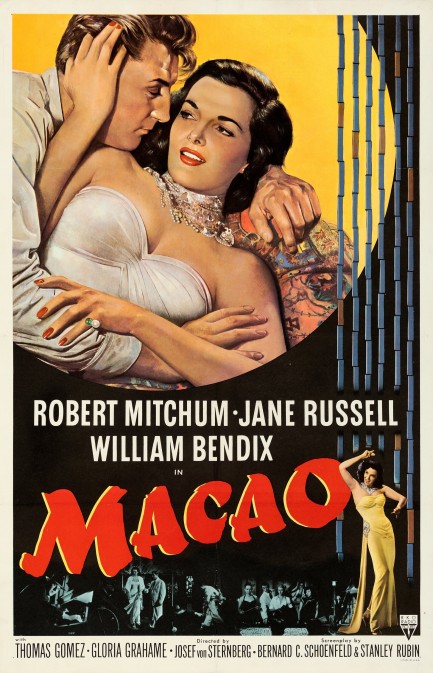
Above is a surpassingly lovely poster for the thriller Macao with Robert Mitchum and Jane Russell, reunited by RKO Studios after the previous year's His Kind of Woman. It's always interesting how old movies introduce the romantic leads to each other. In filmmaking parlance, these encounters are sometimes called “meet-cutes.” But it isn't very cute for the man to have to save the woman from a sexual assault. It's also not cute when the price for being saved is an uninvited kiss, but this is the early fifties and in movies you have to expect that stuff. Nonconsensual wrestling match—bad. Nonconsensual kiss—okay. Mitchum goes in for his reward and Russell doesn't mind.
We joked about these two being the best looking pair you can find in vintage cinema, and they're both in top form here. The honchos at RKO knew they had a dream pairing. Placing them in an exotic port, giving them an obstacle to overcome, writing them some quips, and hiring a respected director like Josef von Sternberg and charging him with capturing Casbalanca-style magic was a no-brainer. The adventure involves Mitchum coming across a stolen diamond, then trying to sell more gems to a local criminal kingpin. Little does he know that it's all a scheme hatched by an American police lieutenant to capture said kingpin, leaving Mitchum stuck in the dangerous middle. Russell plays a lounge singer and seems ancillary to all the intrigue, but as the plot evolves she becomes central to the caper.
Macao has its moments, and we certainly enjoyed it, but objectively speaking it's a middling effort, with too many narrative holes and too much boilerplate dialogue to offer any real thrills. The caper isn't compelling, and the villain—played by Brad Dexter as if he's on Quaaludes—has no real sense of menace. So the movie has the exotic port, the obstacle, and the quips—but no magic. Mitchum gets the girl, though, so that's something. Or maybe Russell gets the boy. However you prefer. What we'd prefer is more of this pairing, but sadly this was the last time the two starred together. While both their collaborations are watchable, they never made the blockbuster their onscreen chemistry deserved. Why not? Probably because Macao flopped so hard. It premiered in the U.S. today in 1952.
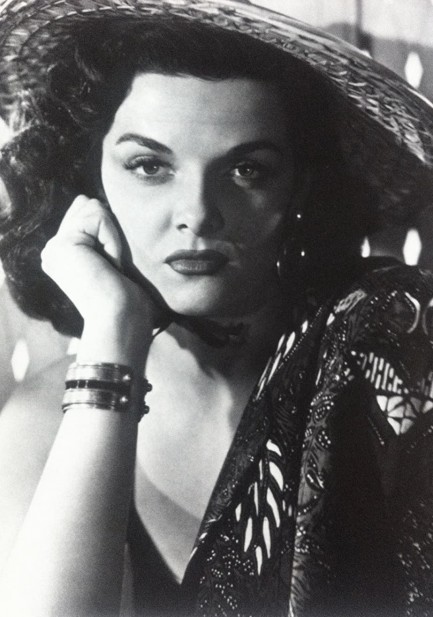 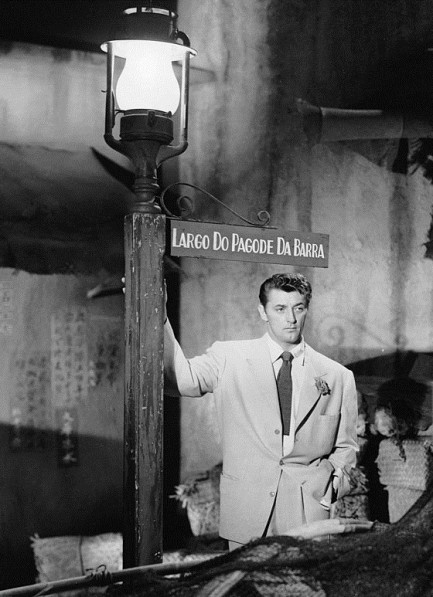 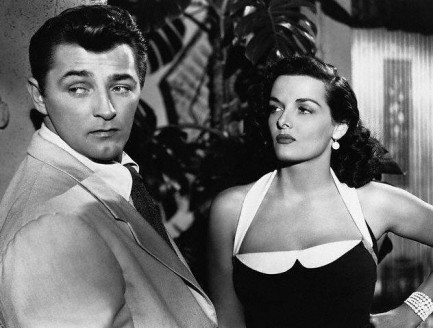 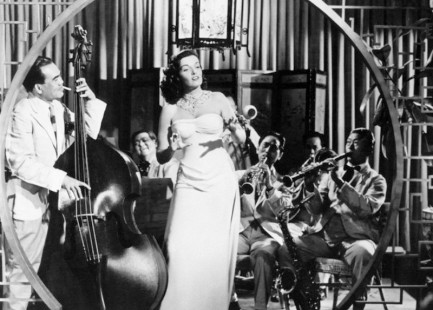 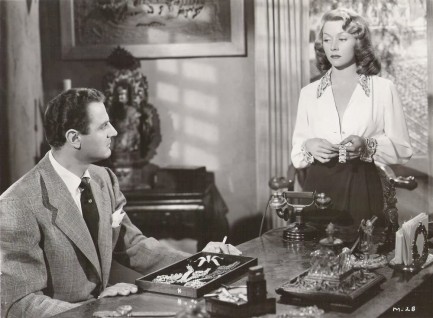 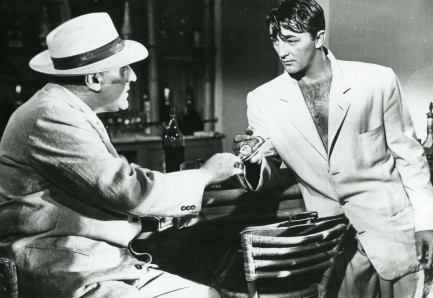 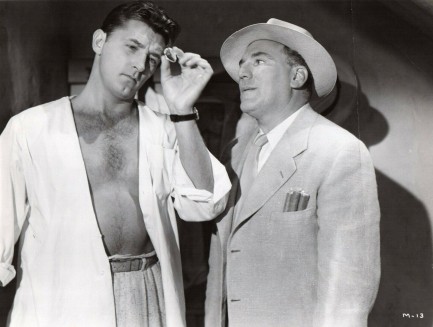 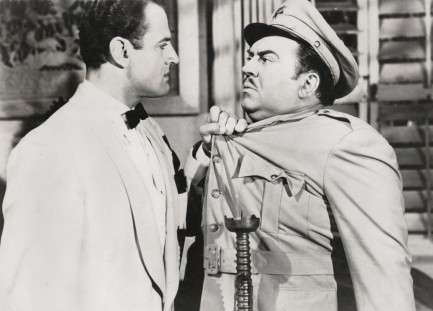 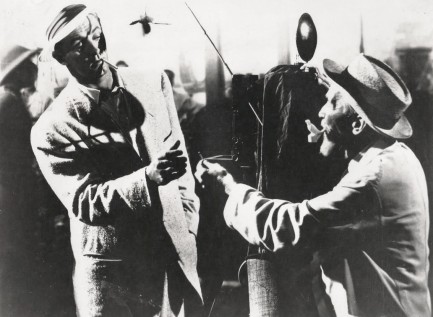 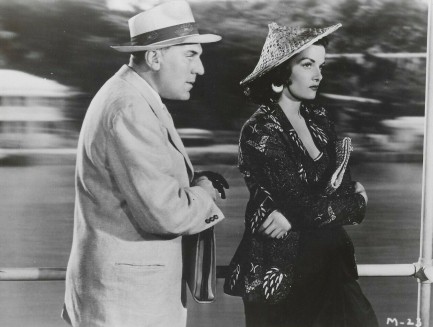 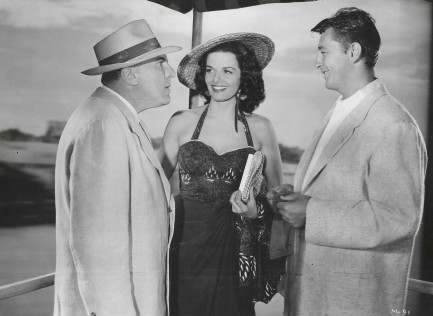 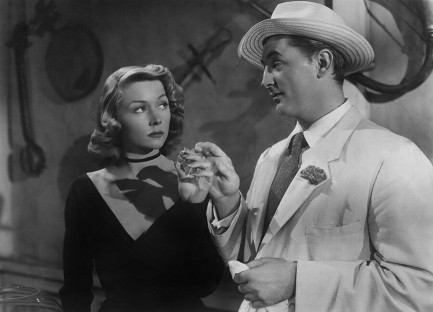 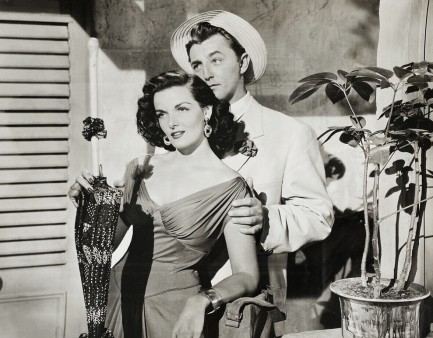 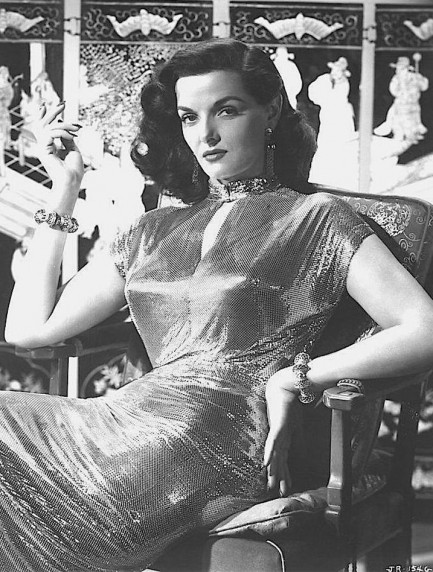 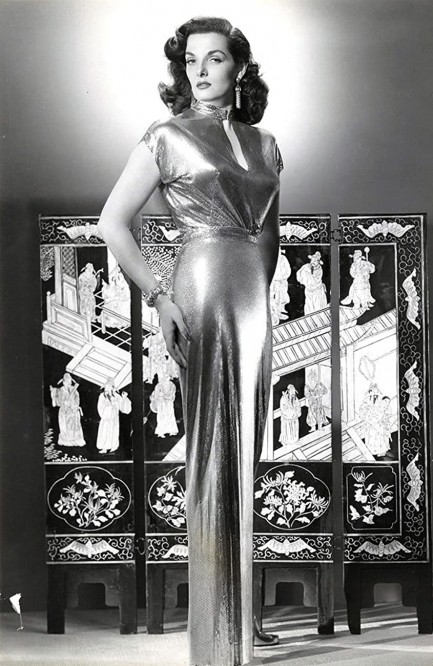 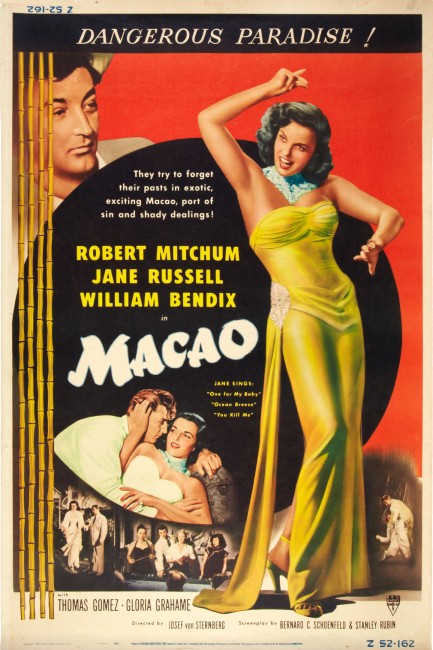
 Jane Russell flirts with audiences—and censorship. 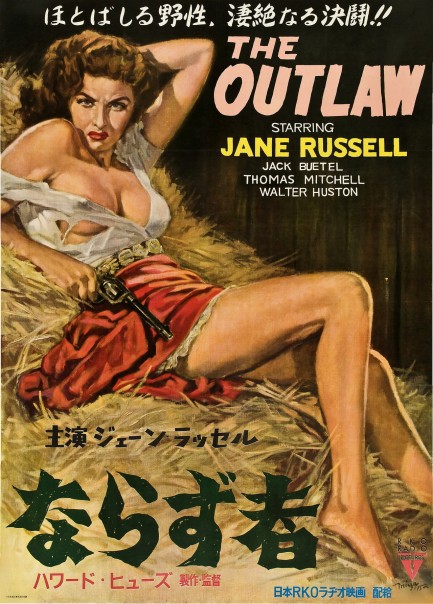
The amazing poster above made for the 1943 western The Outlaw, a stinker of a movie that's one of the earlier ones to prove that a film can be terrible yet still be a hit. In fact, it was one of the most financially successful westerns of the 1940s, but really, really bad, as we discussed in our write-up a few years ago. The poster is shocking. Look at Jane's almost exposed boobs. Look at her clearly visible nipple. The movie was first slated to show in Japan in 1946 but censors wouldn't allow it, so it didn't actually didn't premiere there until 1952, but still, 1952 strikes us as pretty early for a design this racy. But the date is confirmed, because it's signed by an artist named Miya, and next to his or her name is “1952.” It's a great piece. We have another, less envelope pushing poster, unsigned and probably by a different artist, below. The Outlaw originally premiered in Japan today in 1952. 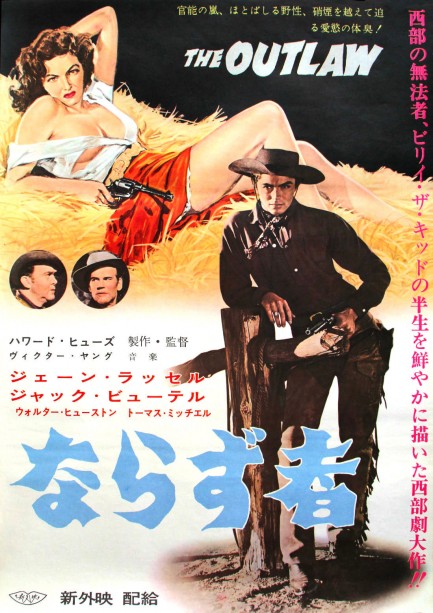
 All the best people showed up. 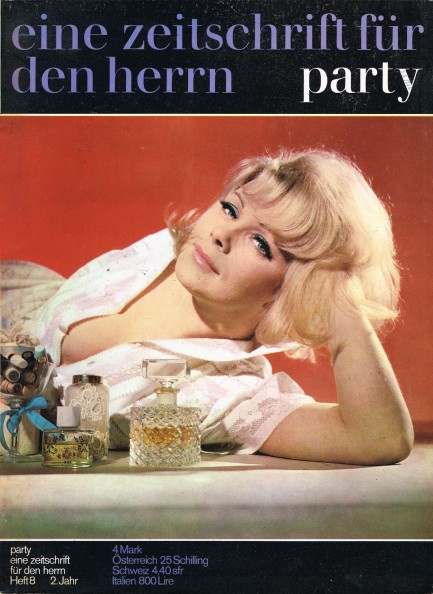
The West German pop culture and celeb magazine Party, which was produced in Hannover by Lehning Press, is an obscure publication. It's very vivid, with bright color, many full page photos, and many film celebrities represented. Equal time is given to unknowns too, for example, the cover features Annelies Niessner, who was... we have no idea, and inside a color page is given to Cornelie, identified only as a “millionärstochter geht eigene wege,” a millionaire's daughter who goes her own way.
In terms of celebs you get Carol Lynley, Jane Russell, Sandra Dee, Stella Stevens, Laya Raki, a beautiful portrait of Jane Fonda, numerous shots of Ursula Andress, and many others. This publication didn't waste words, even on the copyright date. The cover tells us this is issue eight, so we're going to say it came in August, and we're thinking it's from 1967. Though it may be short on info, Party is an appropriate name, because it's a very fun magazine. We have several more issues, so look for those later. 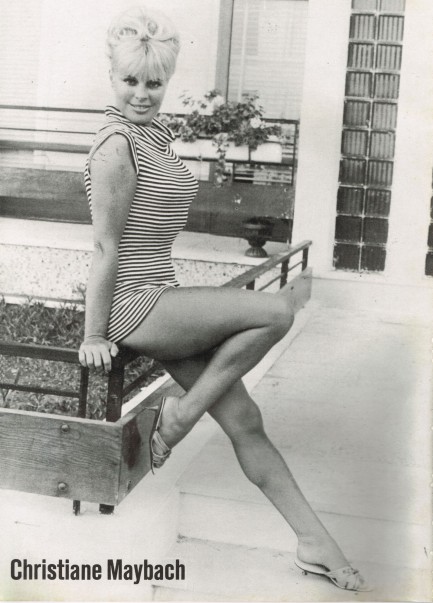 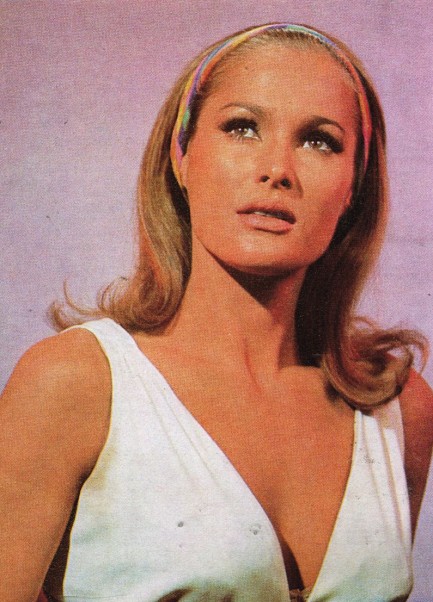 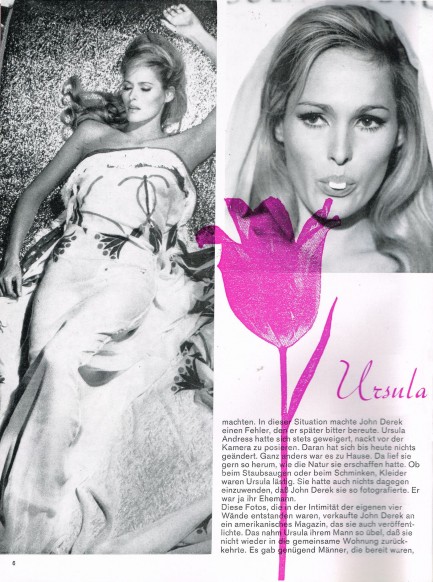 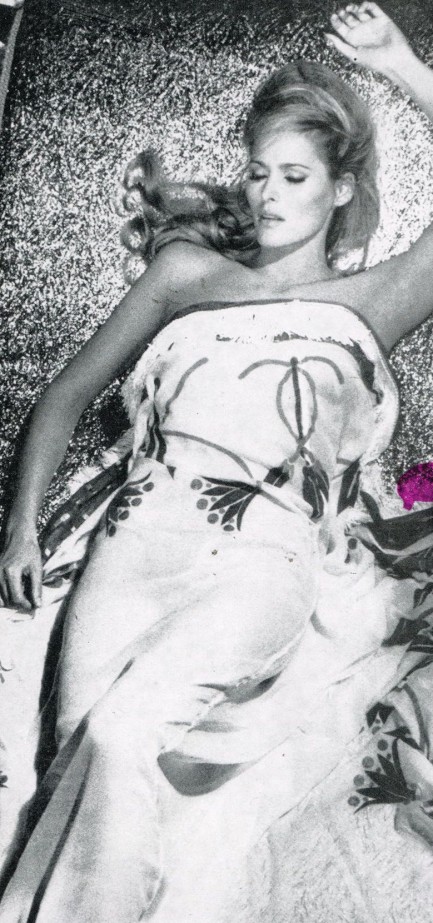 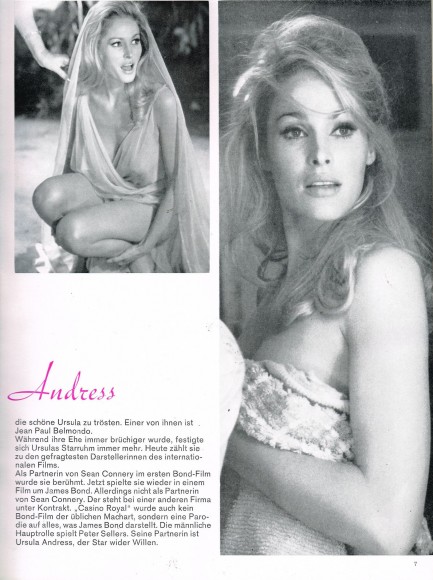 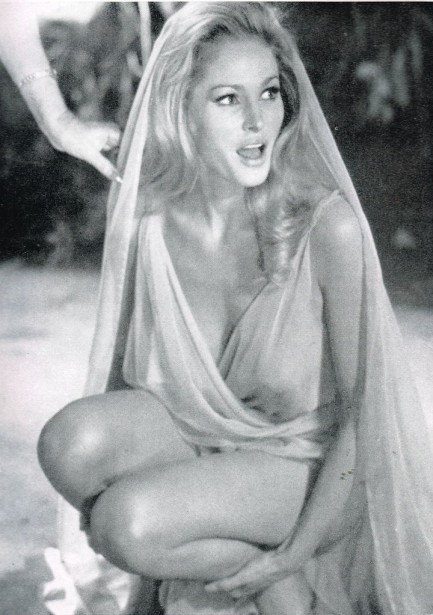 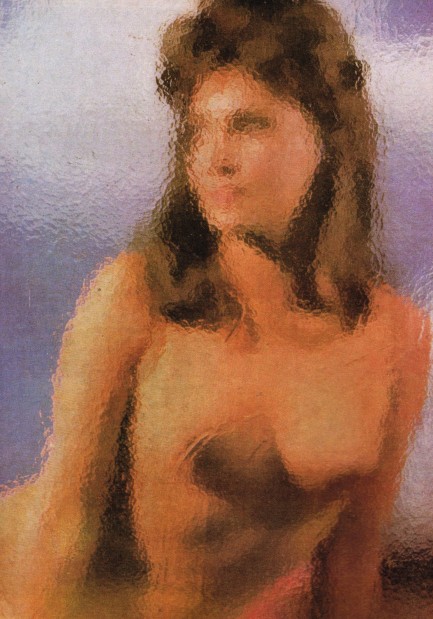 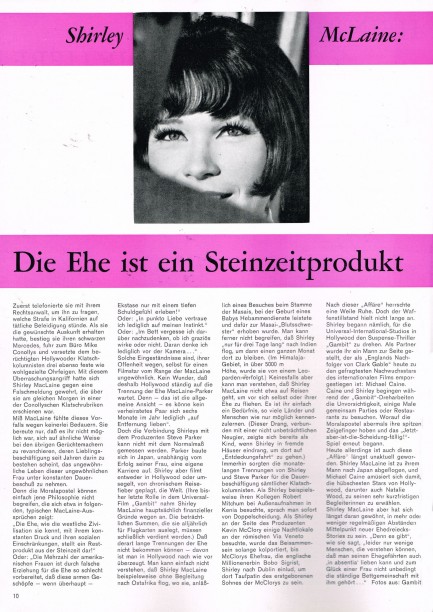 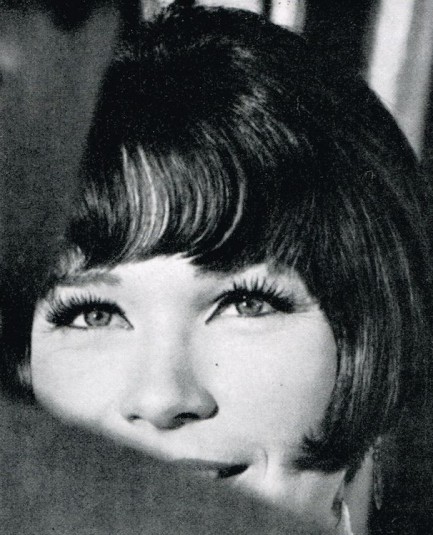 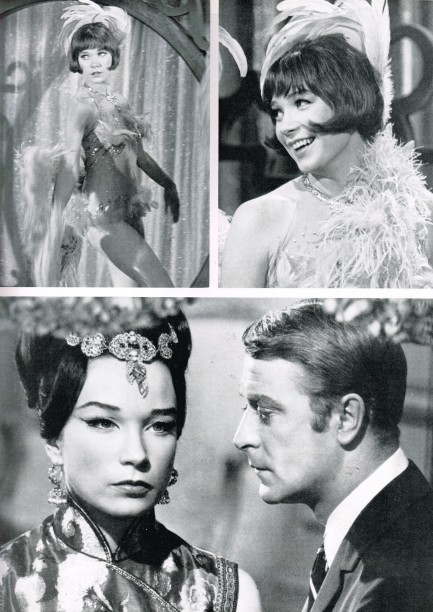 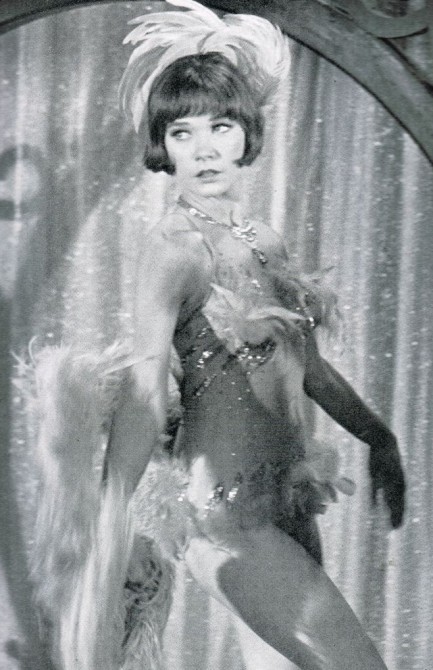 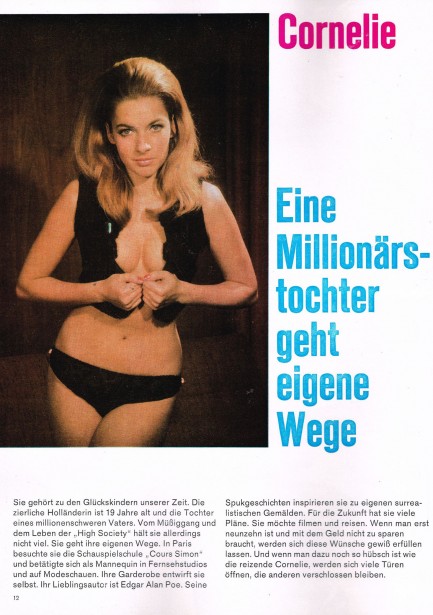 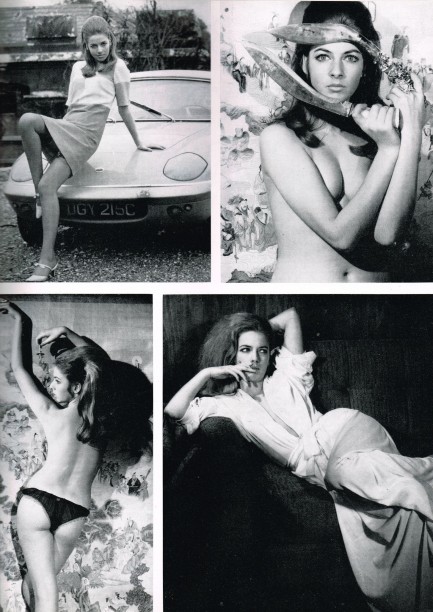 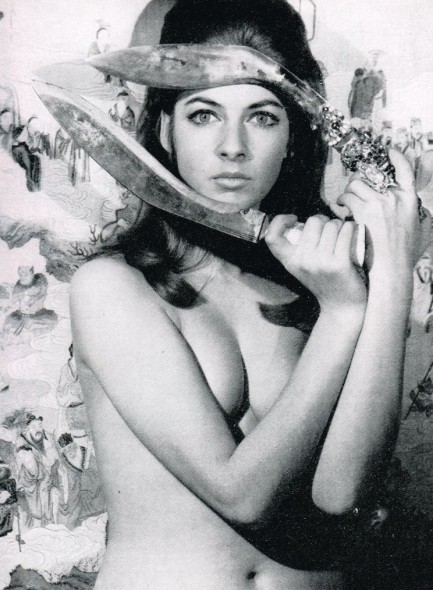 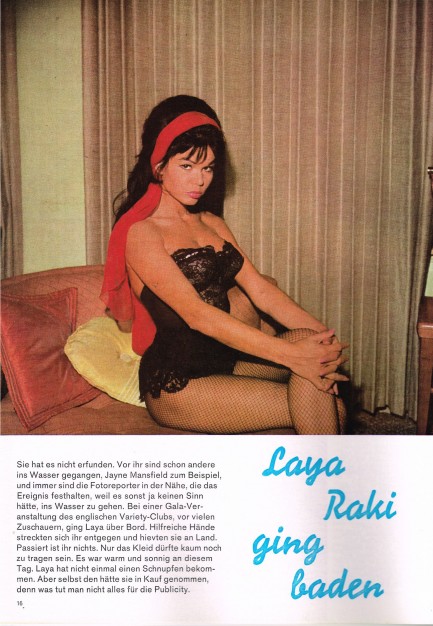 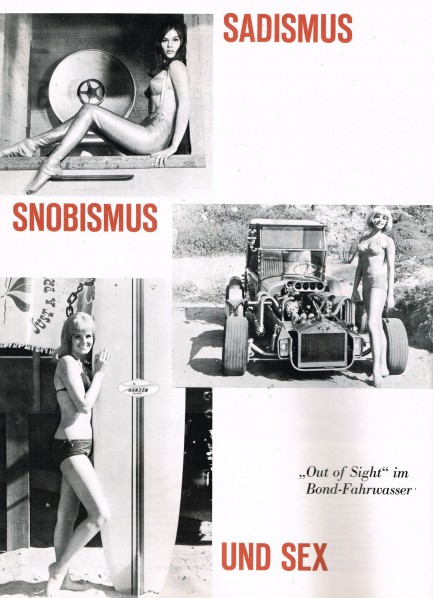 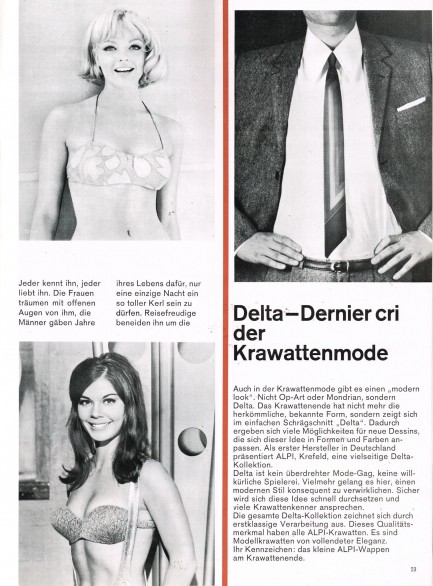 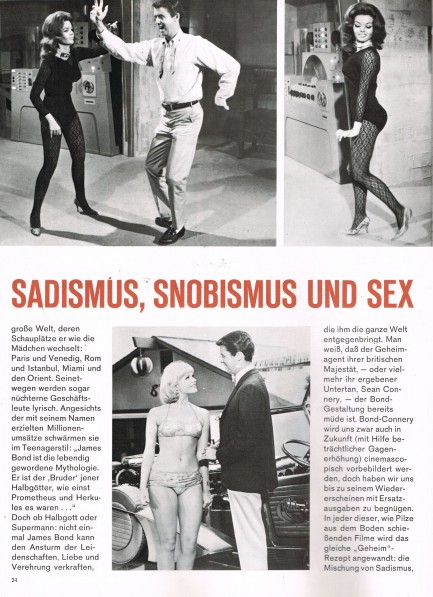 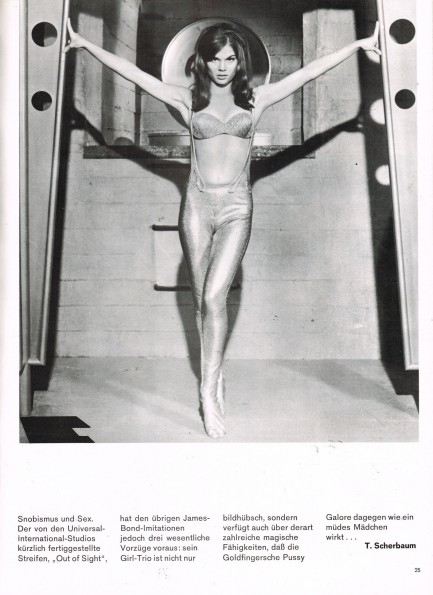 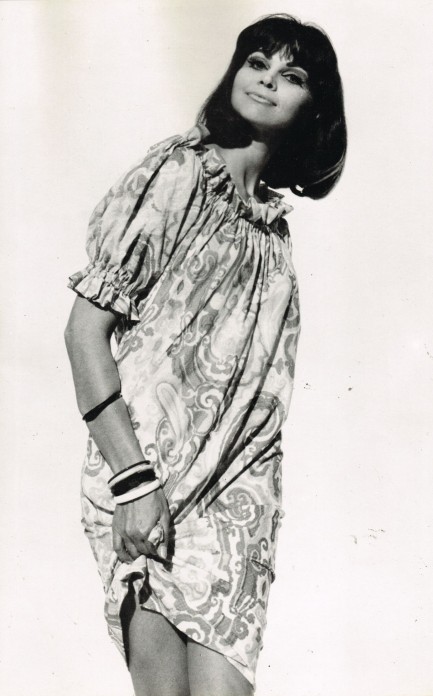 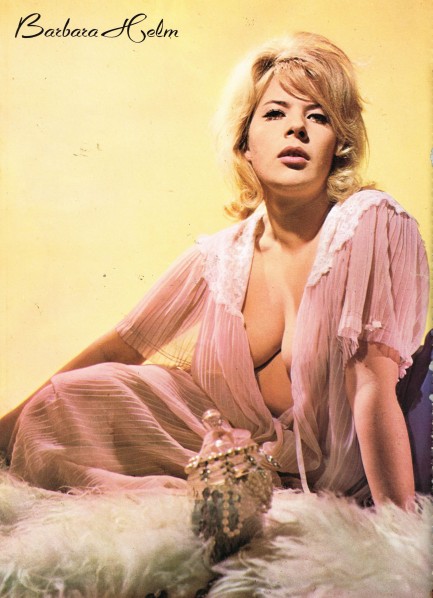 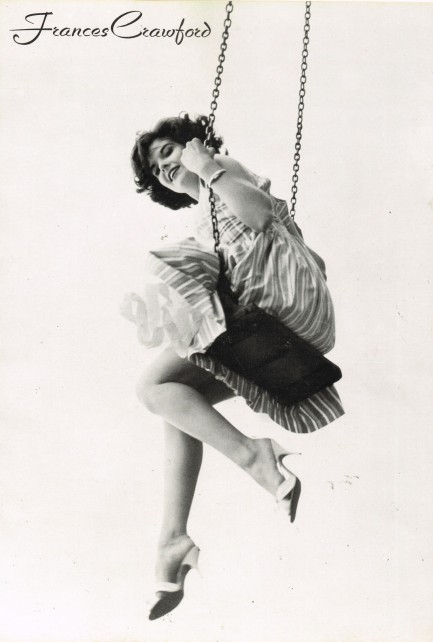 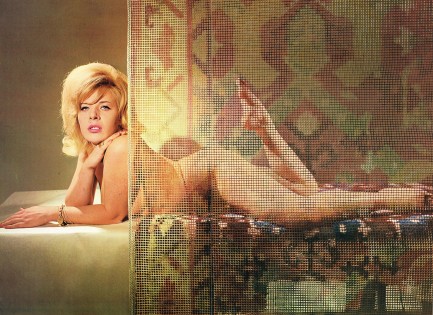 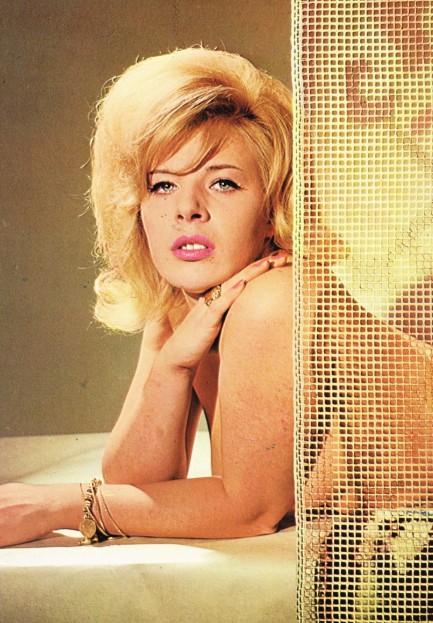 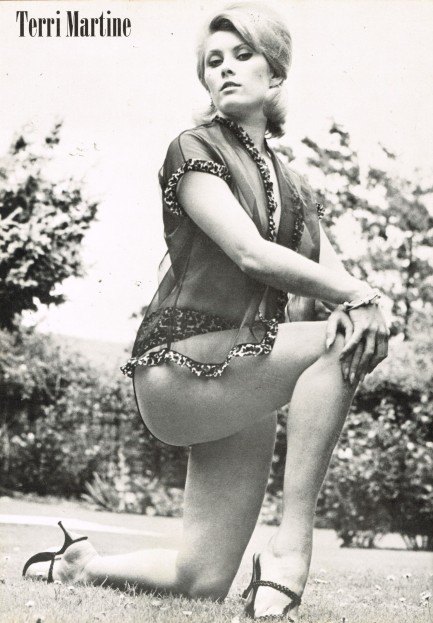 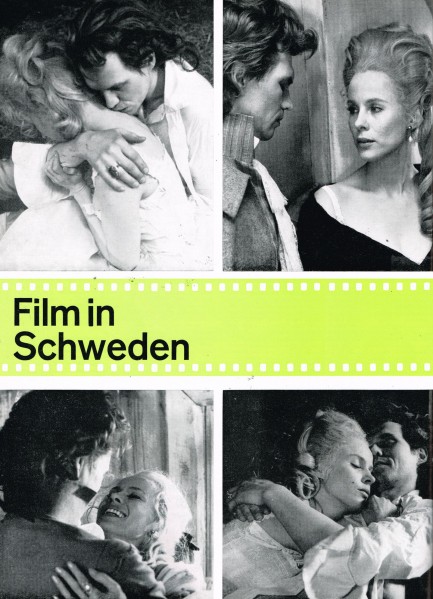 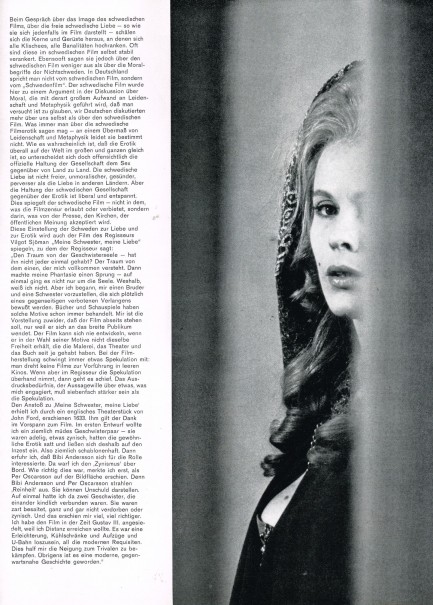 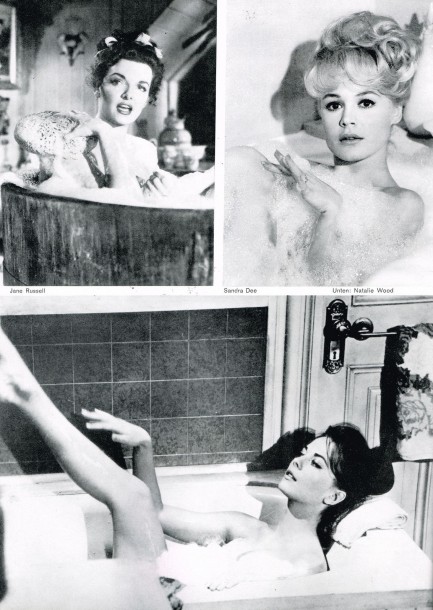 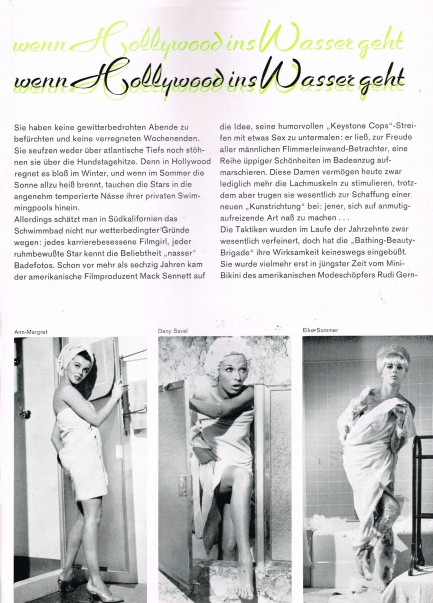 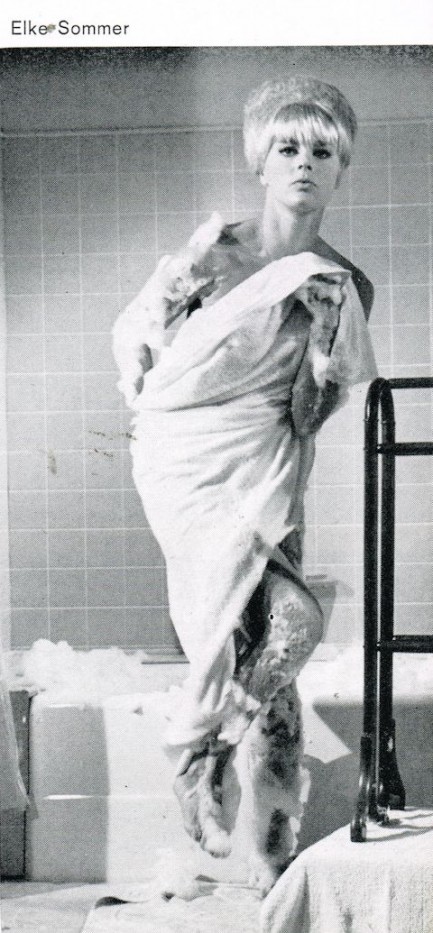 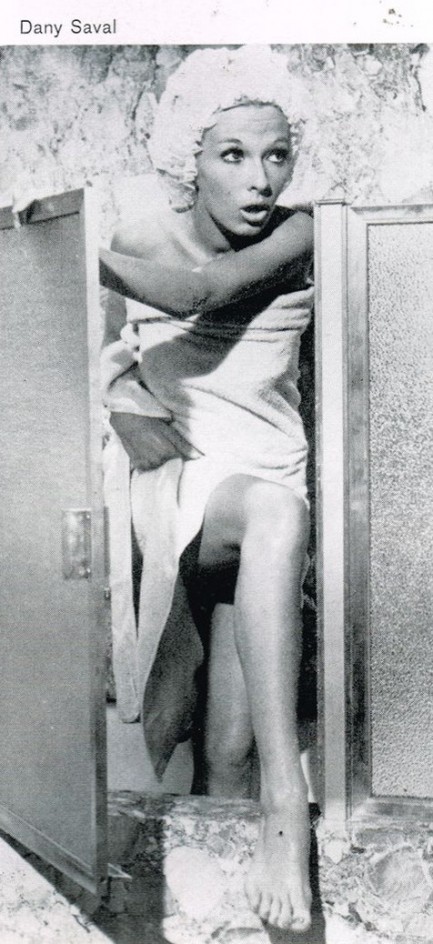 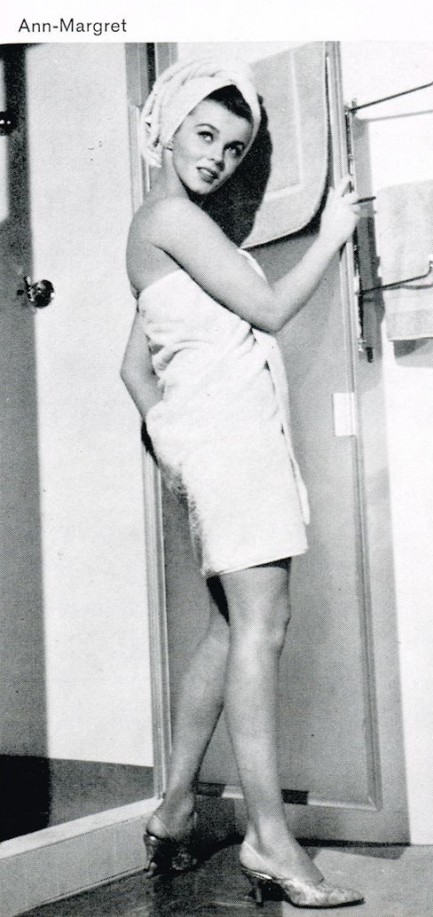 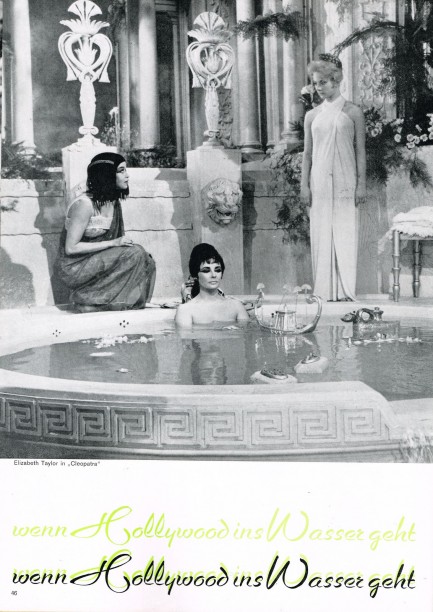 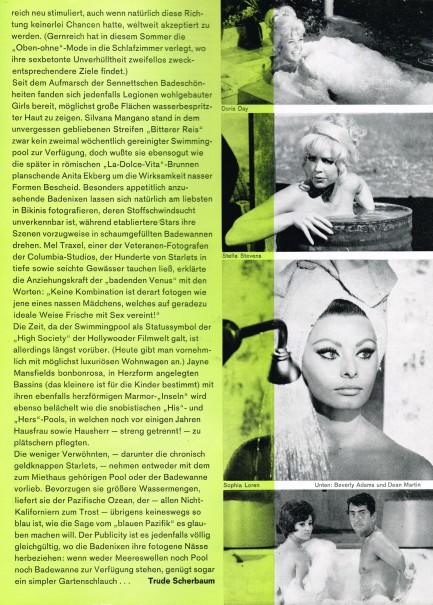 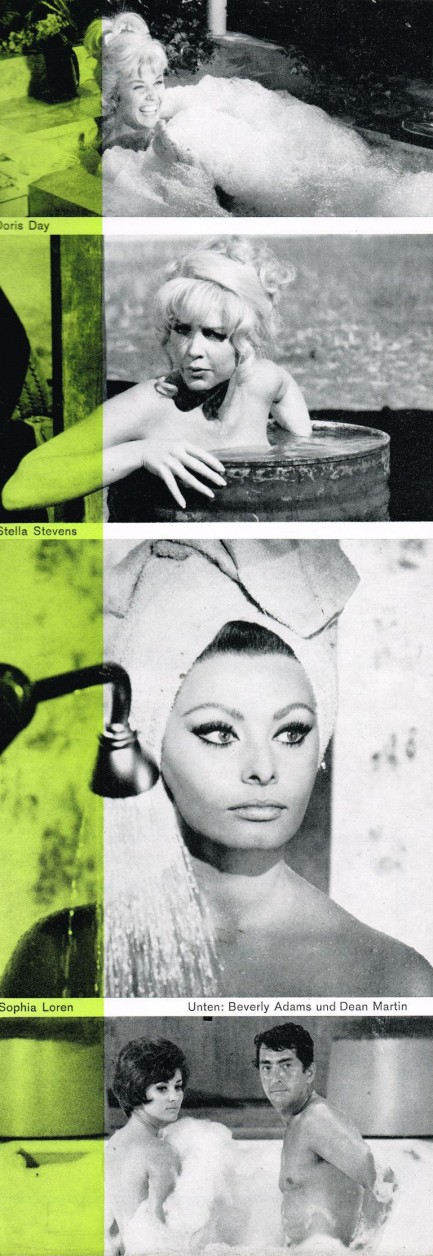 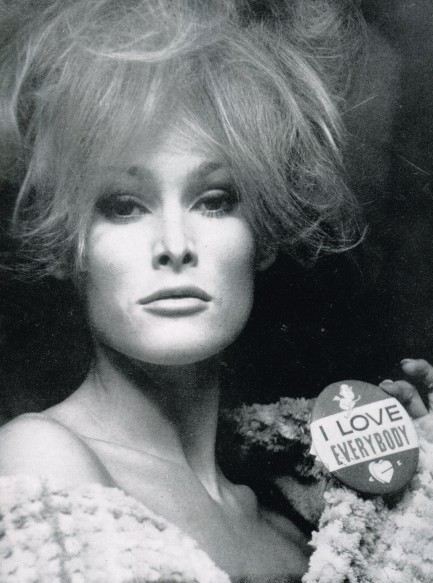 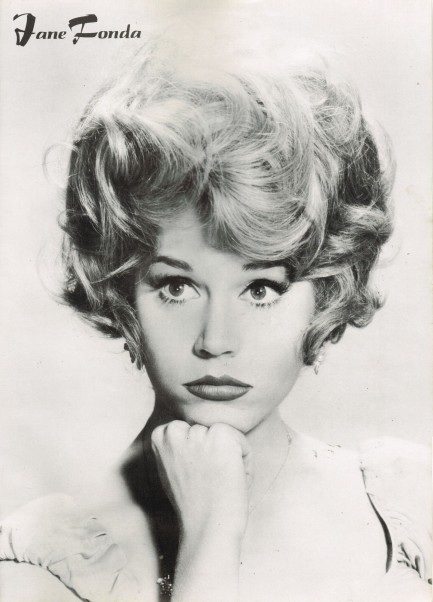 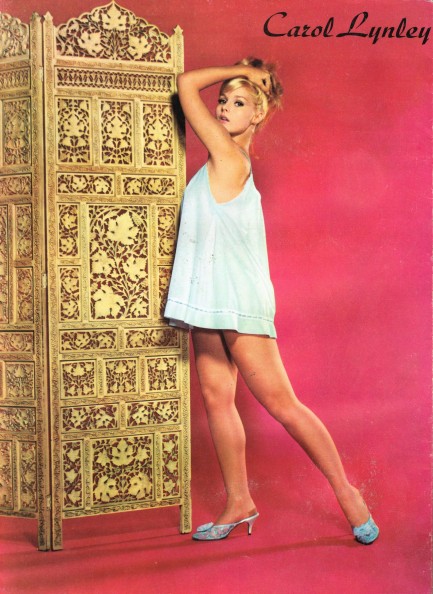
 A straight Line, and numerous curves. 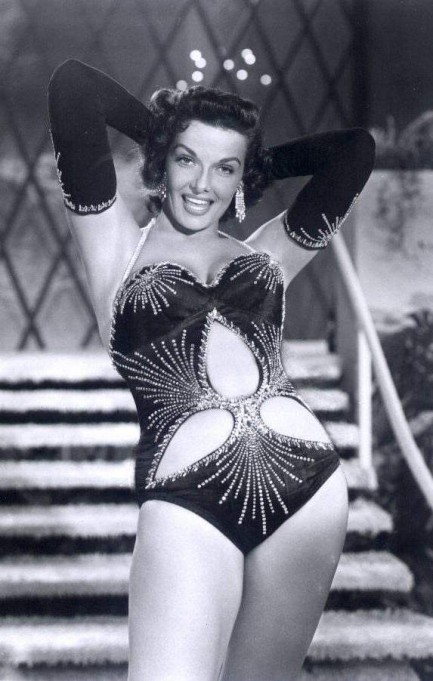
This shot of U.S. actress Jane Russell features her in an unusual get-up you've seen before, if you visit Pulp Intl. often. She wore it on the cover of the very first issue of the 1950s tabloid Exposed, which we bought, scanned, and uploaded a while back. The shot was made during her performance in the 1953 musical comedy The French Line, in which she starred as a rich woman who finds romance while aboard a cruise ship of the Compagnie Générale Transatlantique—the French Line. The fact that this is a still from the movie explains why Russell is presenting her curvy body hips forward—she's in mid-musical number, swinging to the music. It was a heck of a performance, too, but just imagine—she was originally supposed to do it in a bathing suit but chickened out.
 This is the best Laff you'll have all day. 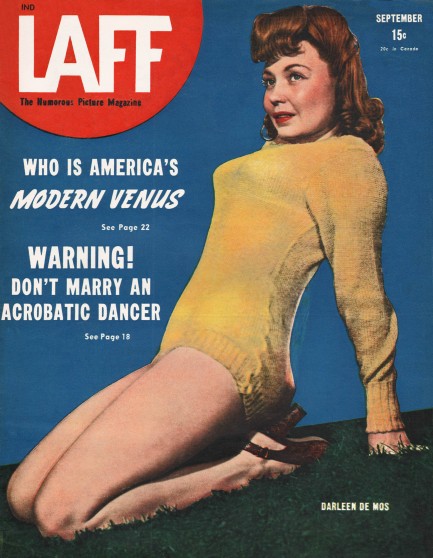
We've posted three issues of Laff magazine over the years, and we return to that publication today with an example from this month in 1946 featuring starlets, showgirls, and burlesque dancers of the highest order. You get Jane Russell, Adele Mara, Vera Ellen, and Myrna Dell, amongst others, but the winner in these pages is Acquanetta, aka the Venezuelan Volcano, who gets a striking tropical themed centerfold photo. In addition, you get a bit of sports coverage—specifically baseball, which is appropriate with the MLB playoffs starting tonight—as well as numerous cartoons. These cartoons—the laffs in Laff magazine—tend to be sexist by today's standards, but then so is this entire website, really, which is an unavoidable side effect of focusing on vintage fiction, art, and photography. We hope the historical significance of the material overshadows all else. In any case, we included the cartoons despite their mostly lame humor, due to the fact that they're high quality illustrations well worth seeing. All that and more appears here in forty-plus scans and zooms, and you can see the other issues of Laff by clicking its keywords below.  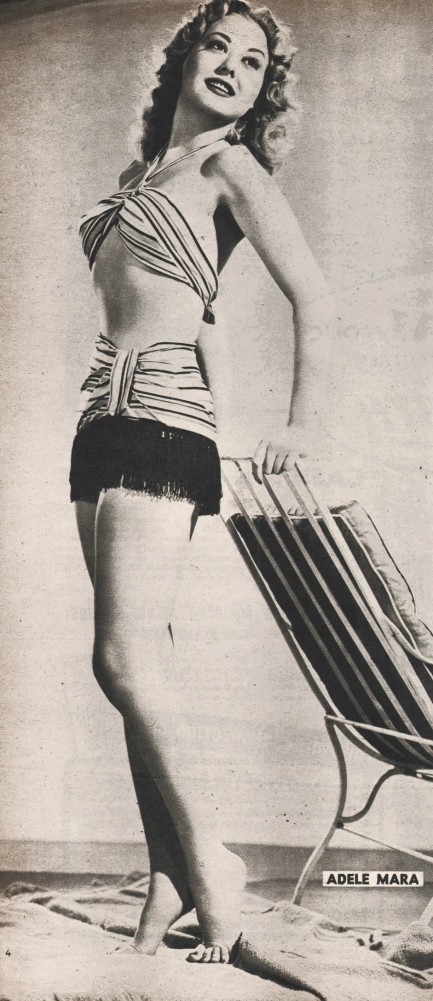 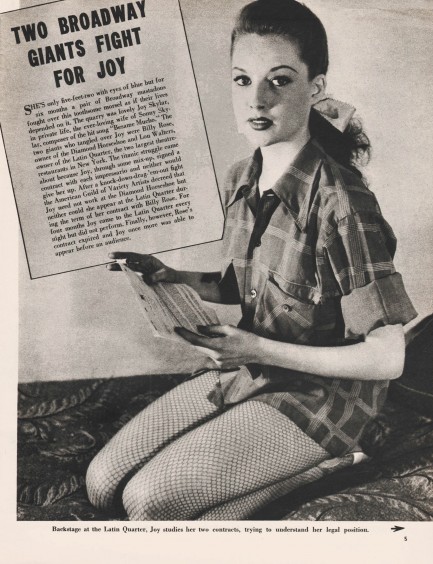 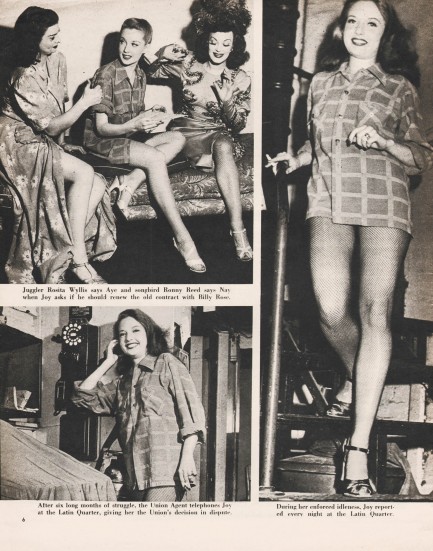  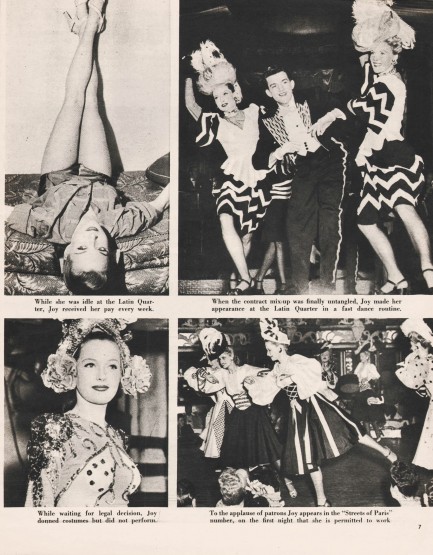  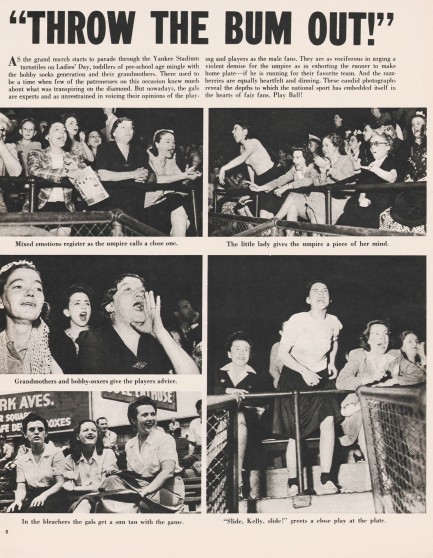 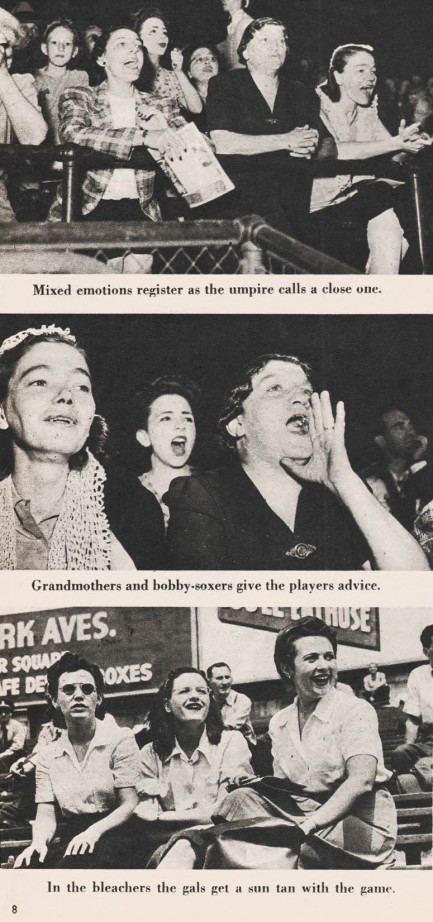 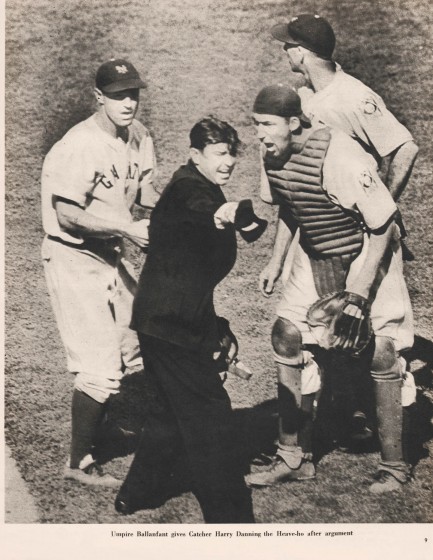 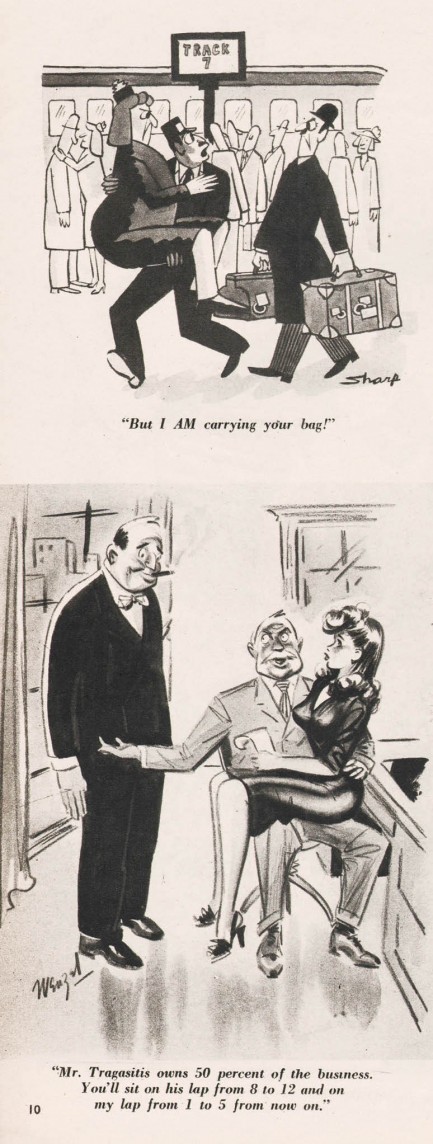 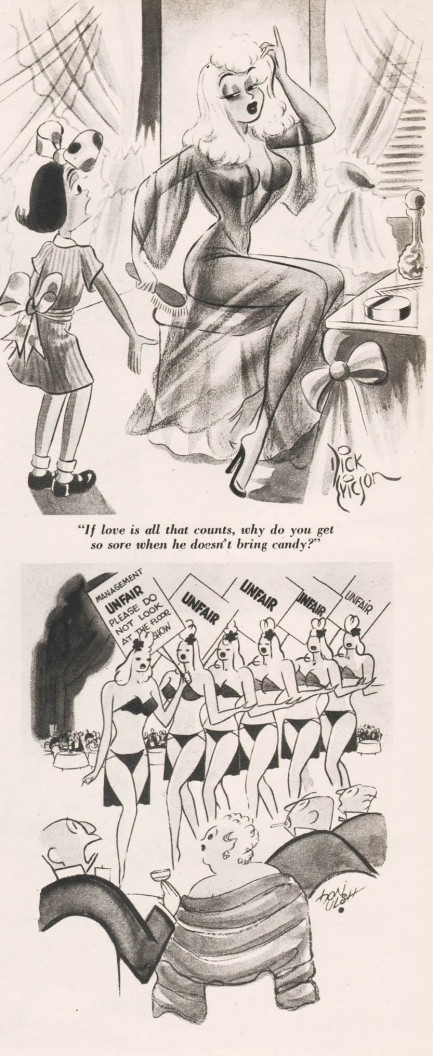 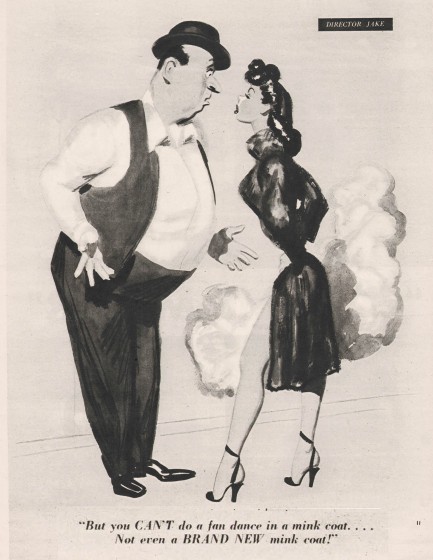 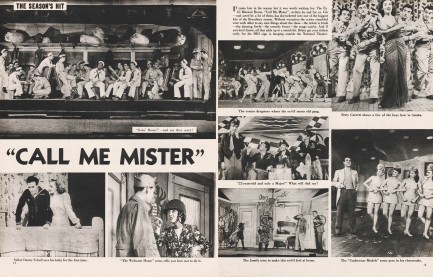 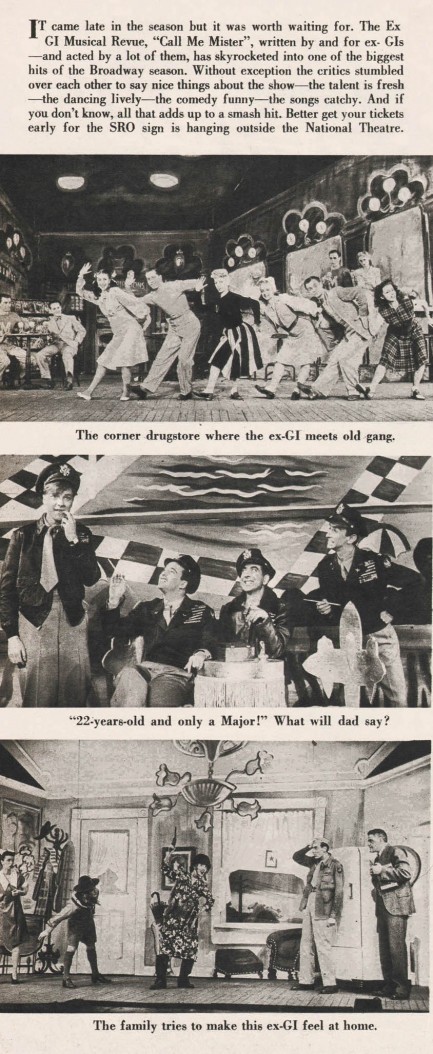 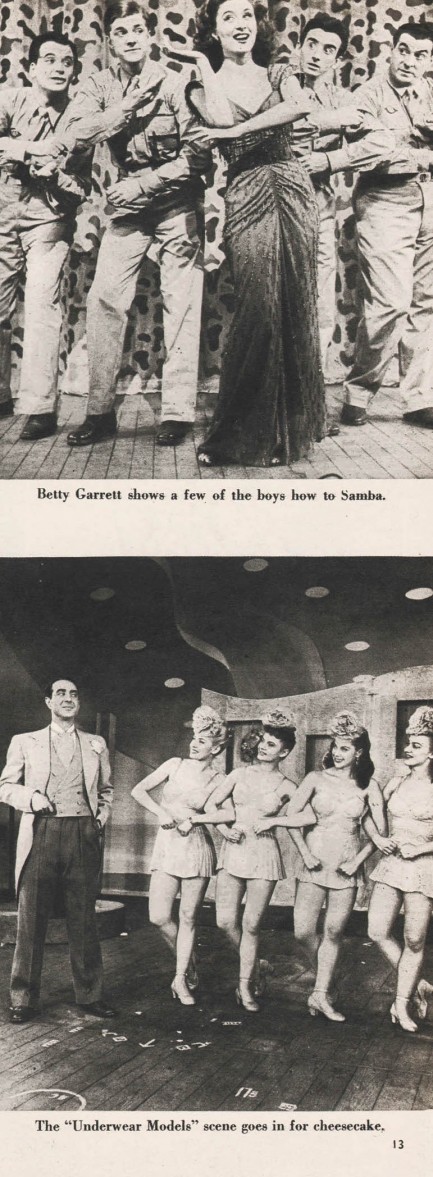 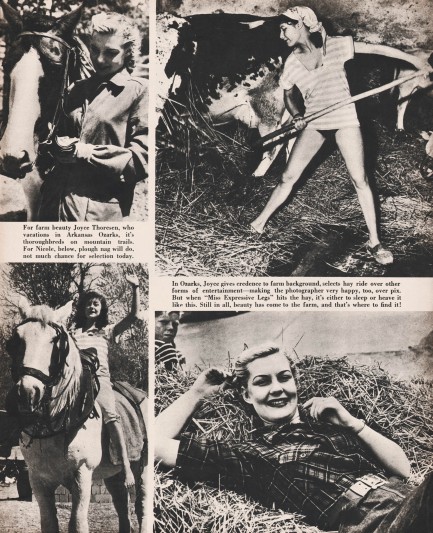  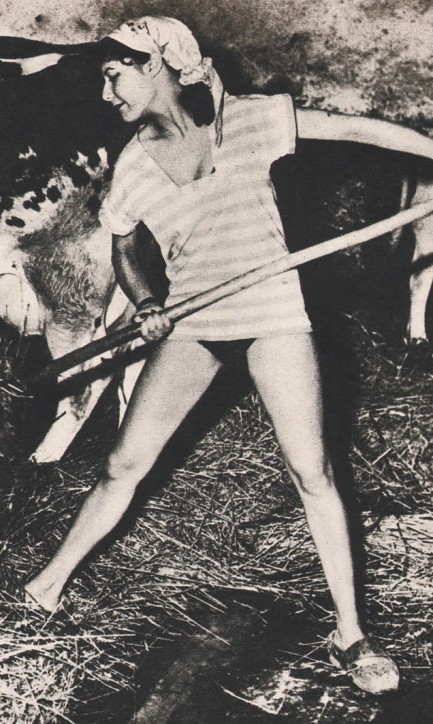 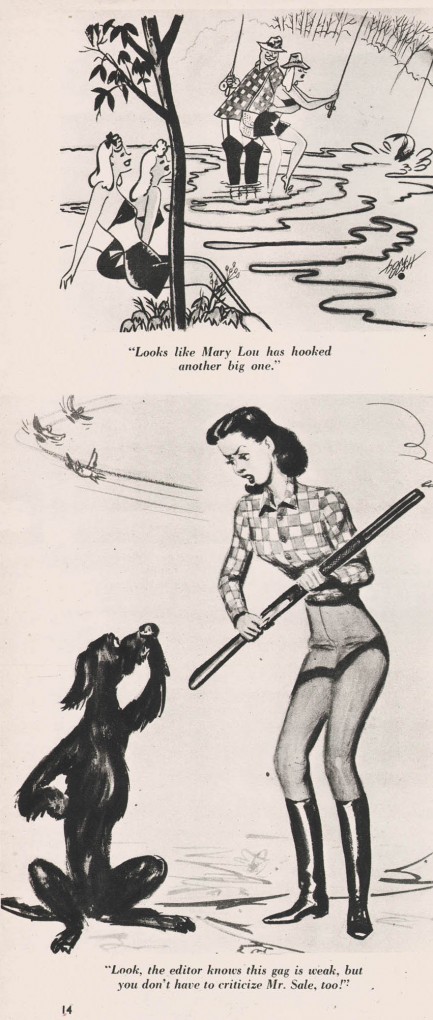 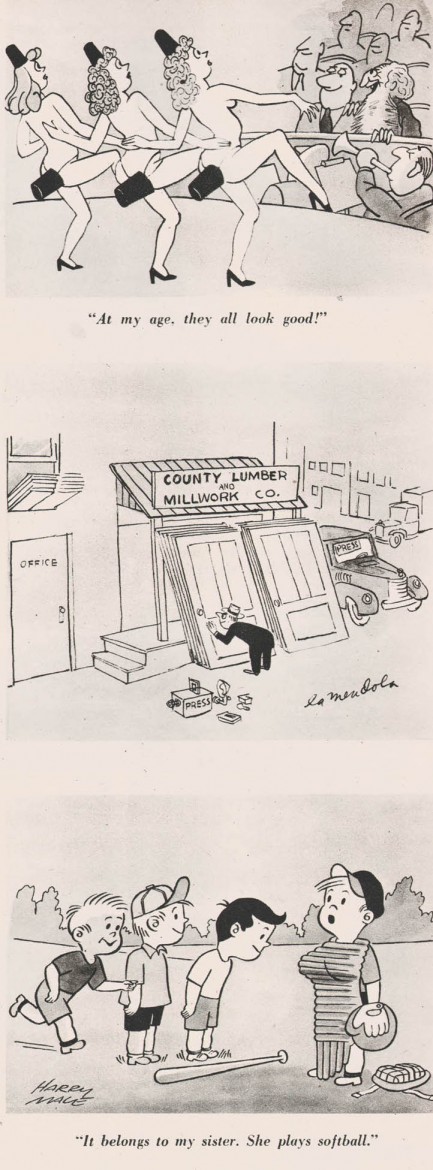 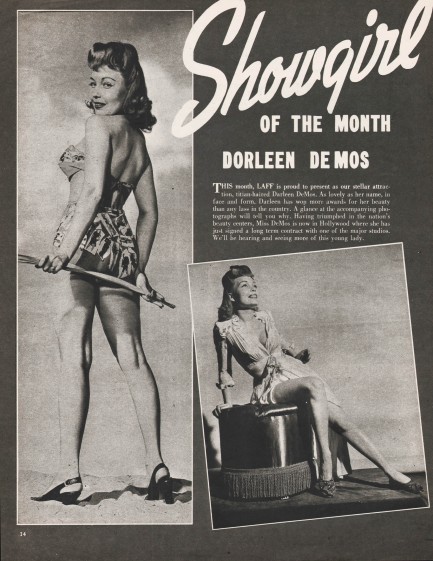 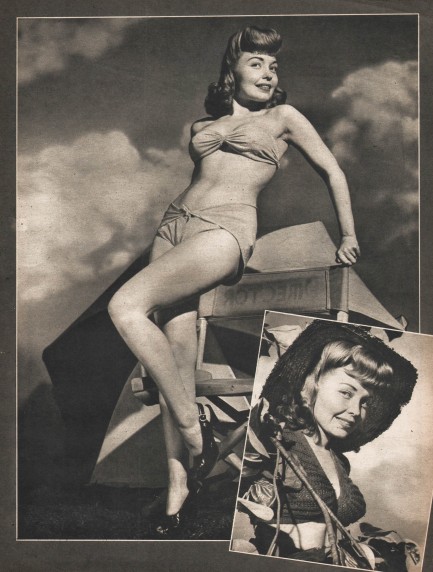 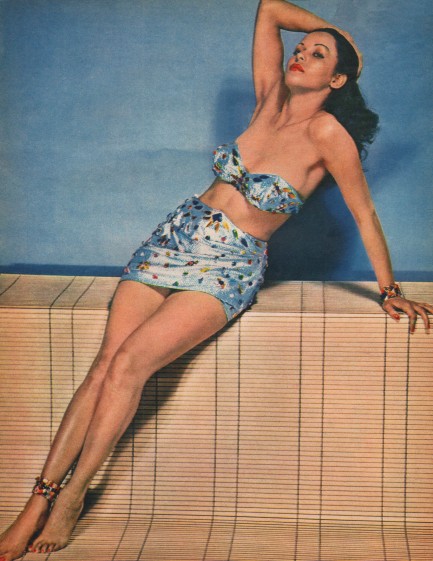 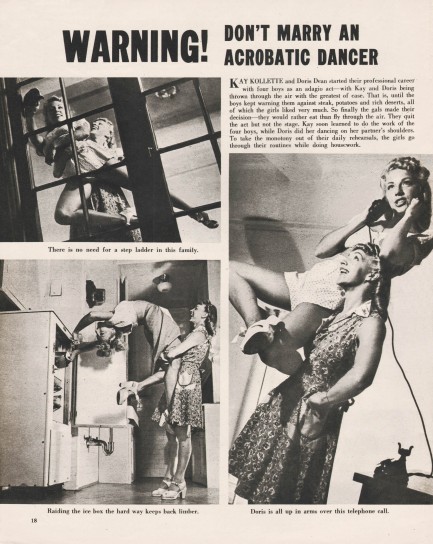 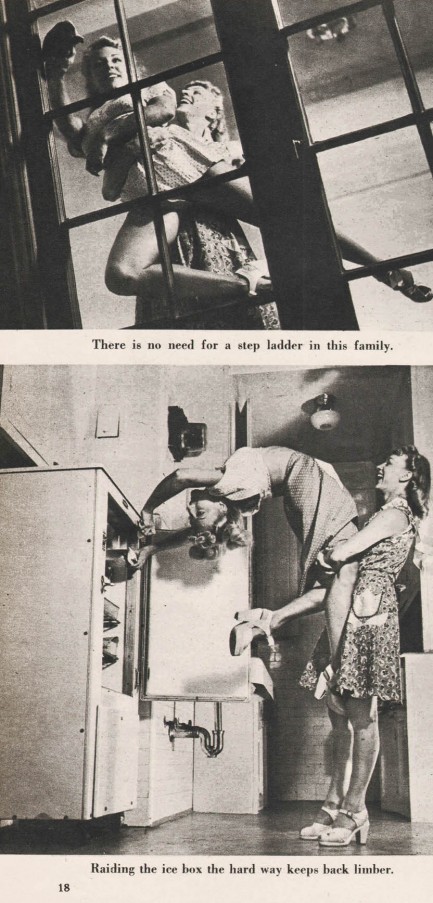 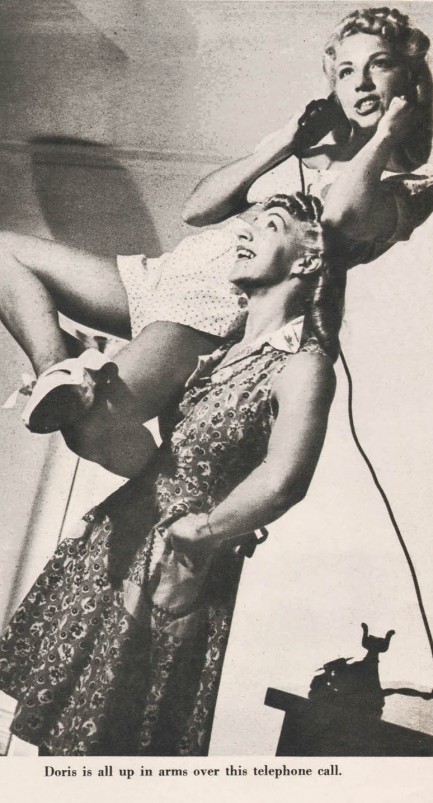 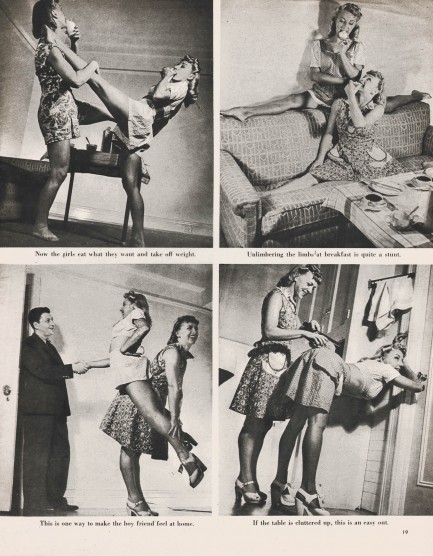 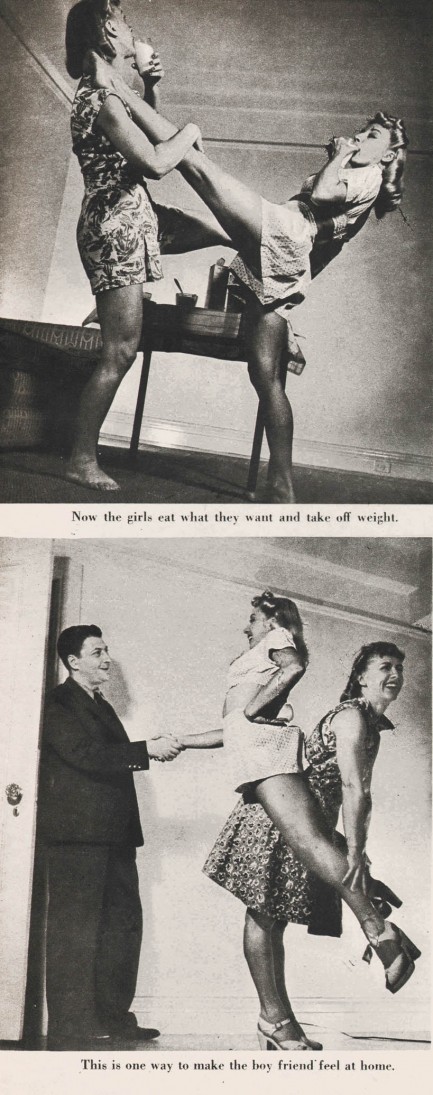 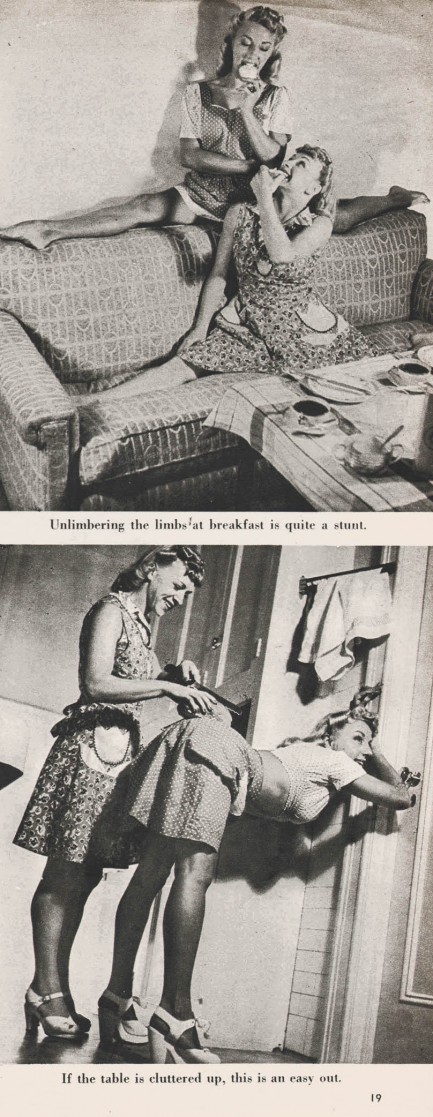 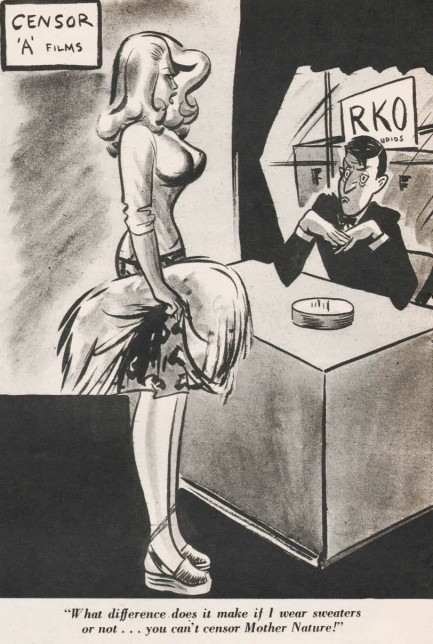 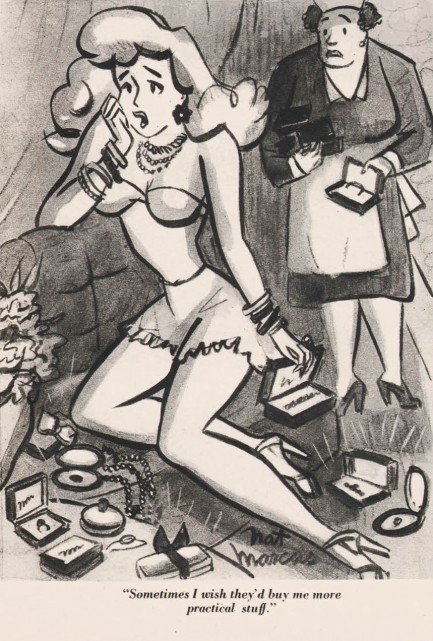 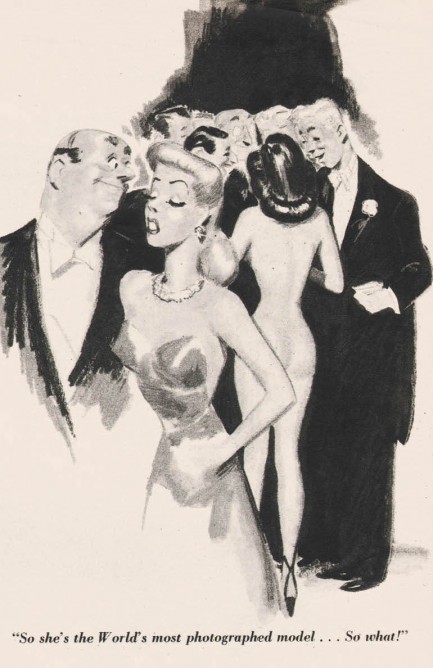 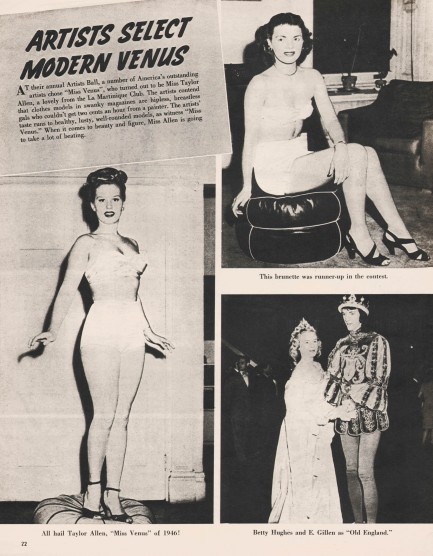 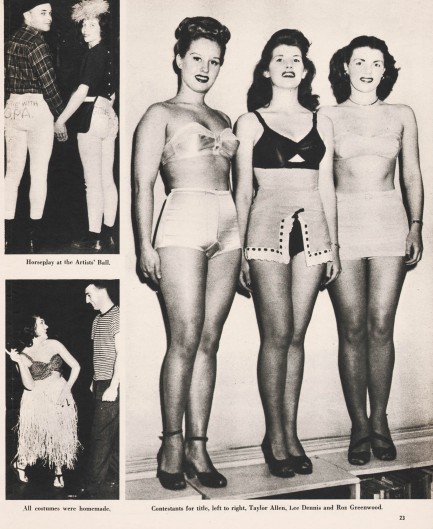 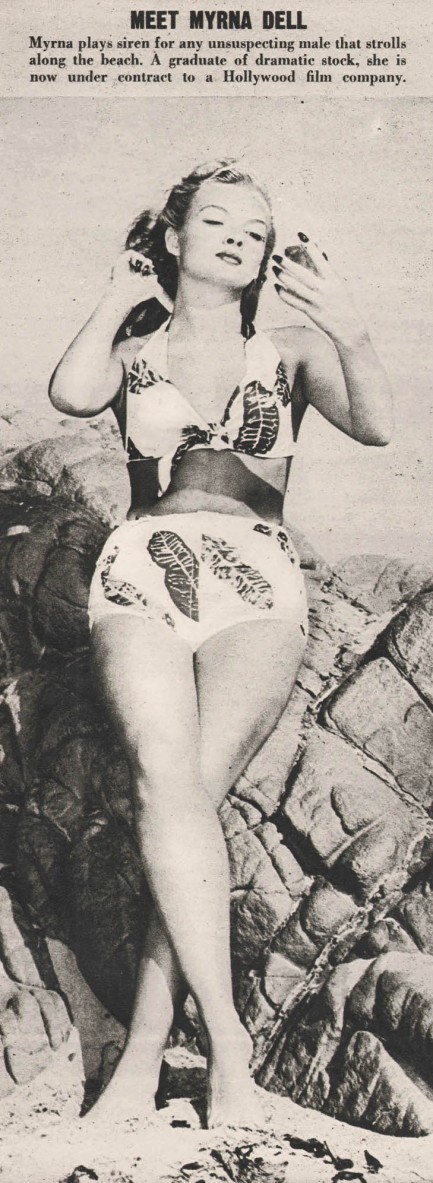 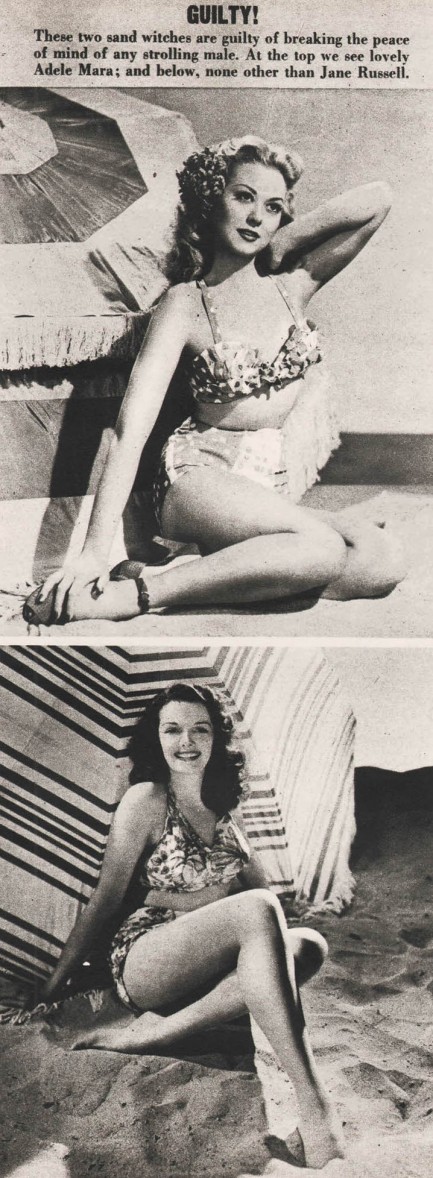 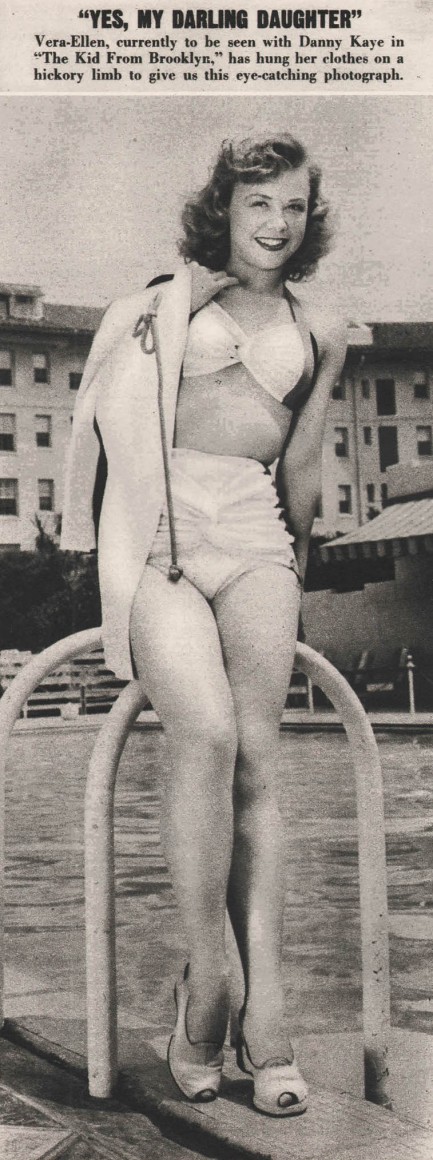 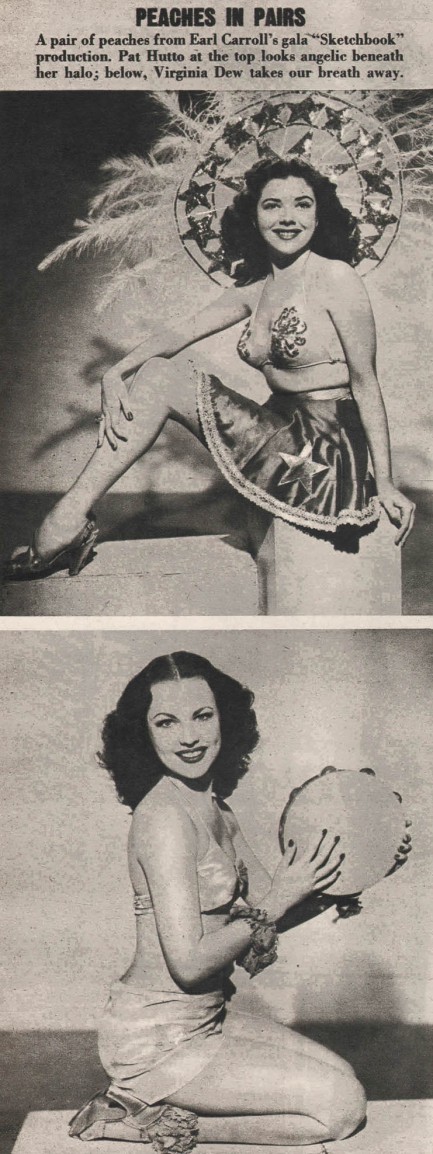 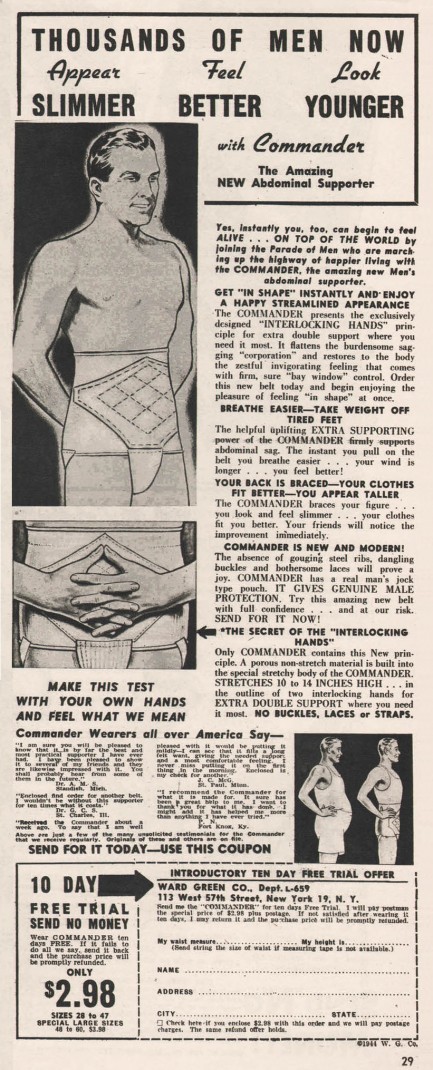
 You know what I love about you, Jane? You're as hot as me. It's like I switched my gender with FaceApp. 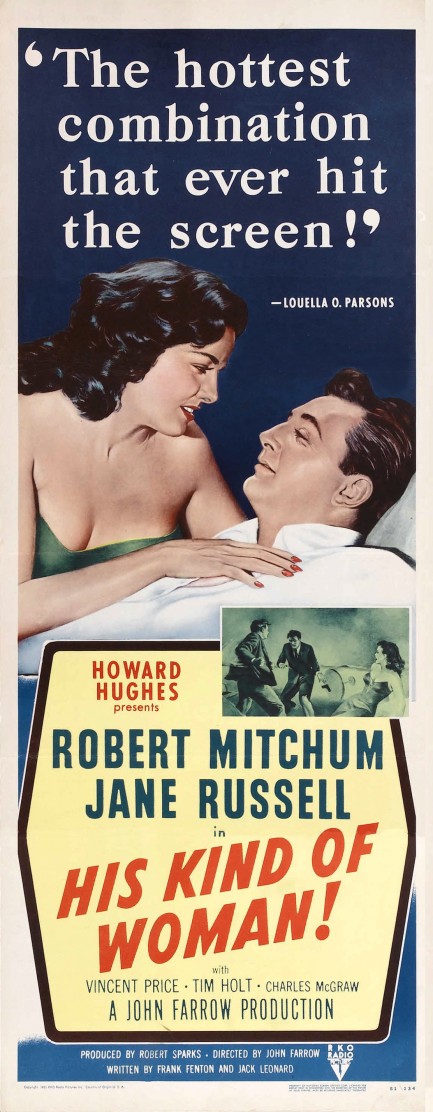
The promo poster for the classic film noir His Kind of Woman declares Jane Russell and Robert Mitchum the hottest combination ever to hit the screen. The windscreen? The screen door? We'll assume it means the silver screen. The movie was made by RKO Radio Pictures when it was run by Howard Hughes, so if you know anything about vintage cinema you already know this production was a mess. Hughes' micromanaging, meddling, and firings of actors led to heavy cost overruns and more than an hour of retakes. Despite these issues Mitchum and Russell do fine as the romantic leads, and support from Vincent Price, Jim Backus, and Raymond Burr helps them immensely. Are they the hottest whatever to hit the whatever? Well, of course. They'd be the hottest pushing a stalled car up a hill, or flossing their rearmost molars, or yakking in the toilet after an all night tequila binge. When you're hot, you're hot. We know quite well because—not to boast—people have said the same about us.
Anyway, Mitchum plays a classic film noir patsy who accepts a pile of money to go to Mexico for unknown purposes, only to discover that the sweet deal he thought he was getting isn't so sweet after all. Russell plays a rich girl idling down south with her lover, a famous actor, but when she gets a gander of Mitchum she starts rethinking her romantic priorities. Any smart woman would. We won't reveal the plot other than to say it's adequate, though not awe inspiring. The last few reels make a hard right turn into comedy, which some viewers hate, but the major problem for us is that the ineptness of the villains during the extended climax strains credulity. In the end His Kind of Woman may not be your kind of movie, but guys (or girls) get to see Russell dress slinkily and sing a couple of songs, and girls (or guys) get to see Mitchum go about twenty minutes with no shirt, so there's a silver lining for everyone here. The film premiered in the U.S. today in 1951.
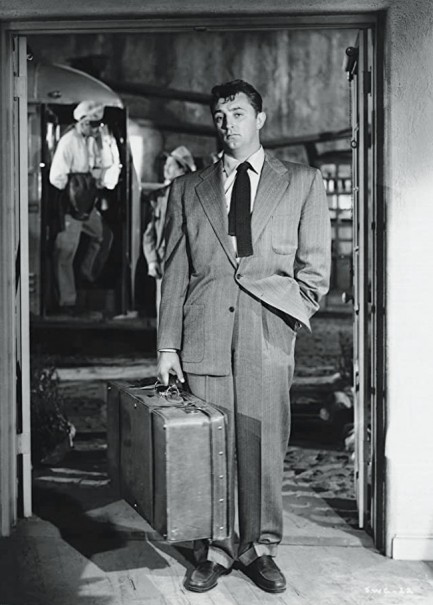 Do you have someplace I can store this suitcase filled with my excess masculine heat? Do you have someplace I can store this suitcase filled with my excess masculine heat? 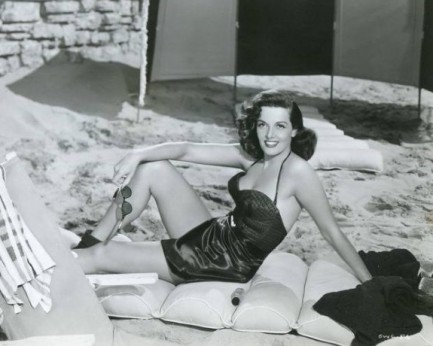 Sure, you can sit next to me. But first you have to sign a liability waiver in case you get scorched. Sure, you can sit next to me. But first you have to sign a liability waiver in case you get scorched. 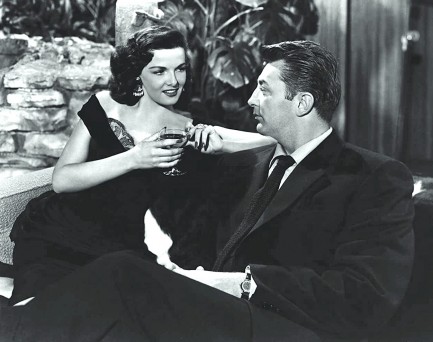 You'll love this next trick. I put my finger in this cognac and it catches fire. You'll love this next trick. I put my finger in this cognac and it catches fire. 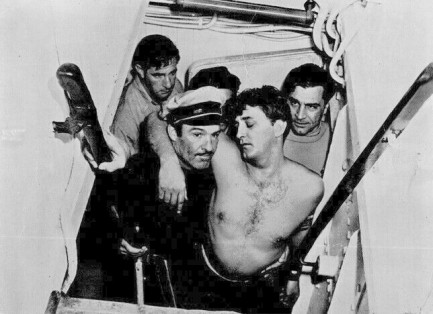 Hot as this guy is, I don't know whether to keep beating on him or start beating on me. Hot as this guy is, I don't know whether to keep beating on him or start beating on me. 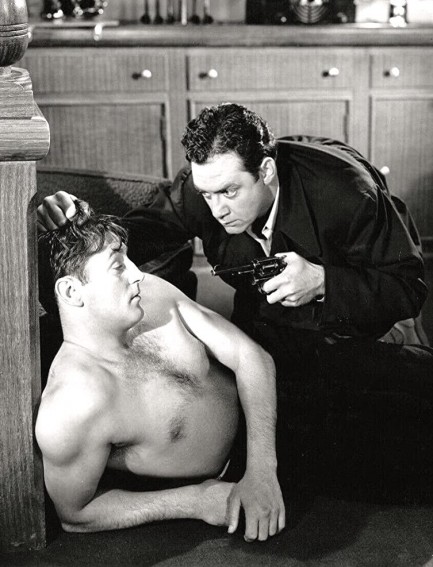 And once I take your face off I'll be the hot one. I'll have it all! Respect, envy, women, excellent service wherever I go! The world will be mine! Mwahh hah hah! Haaaaaaaah haha hahah! And once I take your face off I'll be the hot one. I'll have it all! Respect, envy, women, excellent service wherever I go! The world will be mine! Mwahh hah hah! Haaaaaaaah haha hahah!

|
 |

The headlines that mattered yesteryear.
2003—Hope Dies
Film legend Bob Hope dies of pneumonia two months after celebrating his 100th birthday. 1945—Churchill Given the Sack
In spite of admiring Winston Churchill as a great wartime leader, Britons elect
Clement Attlee the nation's new prime minister in a sweeping victory for the Labour Party over the Conservatives. 1952—Evita Peron Dies
Eva Duarte de Peron, aka Evita, wife of the president of the Argentine Republic, dies from cancer at age 33. Evita had brought the working classes into a position of political power never witnessed before, but was hated by the nation's powerful military class. She is lain to rest in Milan, Italy in a secret grave under a nun's name, but is eventually returned to Argentina for reburial beside her husband in 1974. 1943—Mussolini Calls It Quits
Italian dictator Benito Mussolini steps down as head of the armed forces and the government. It soon becomes clear that Il Duce did not relinquish power voluntarily, but was forced to resign after former Fascist colleagues turned against him. He is later installed by Germany as leader of the Italian Social Republic in the north of the country, but is killed by partisans in 1945.
|

|
|

It's easy. We have an uploader that makes it a snap. Use it to submit your art, text, header, and subhead. Your post can be funny, serious, or anything in between, as long as it's vintage pulp. You'll get a byline and experience the fleeting pride of free authorship. We'll edit your post for typos, but the rest is up to you. Click here to give us your best shot.

|
|




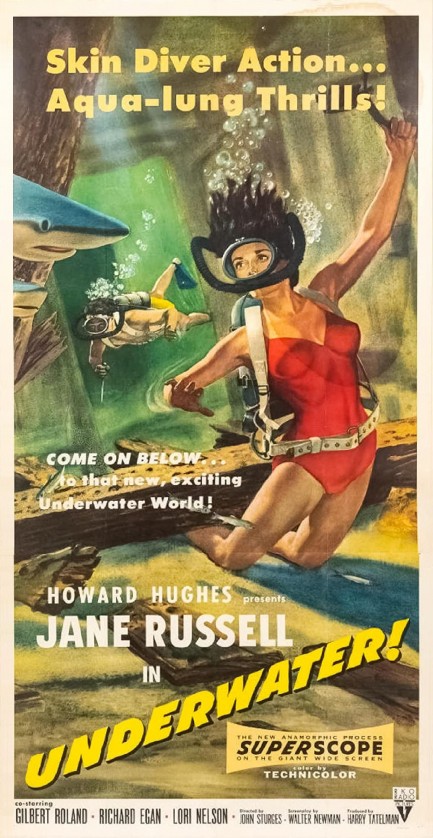
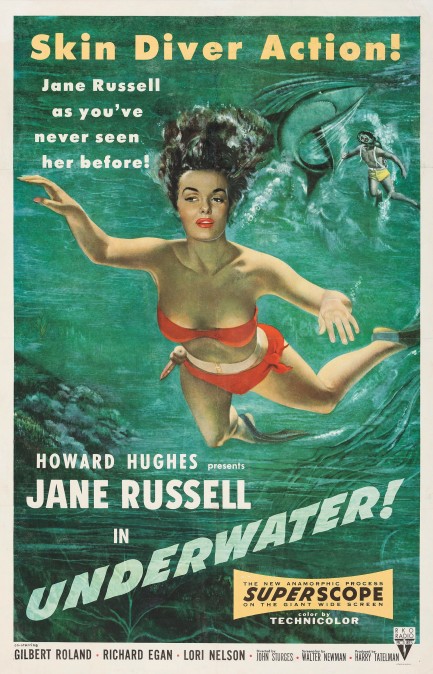
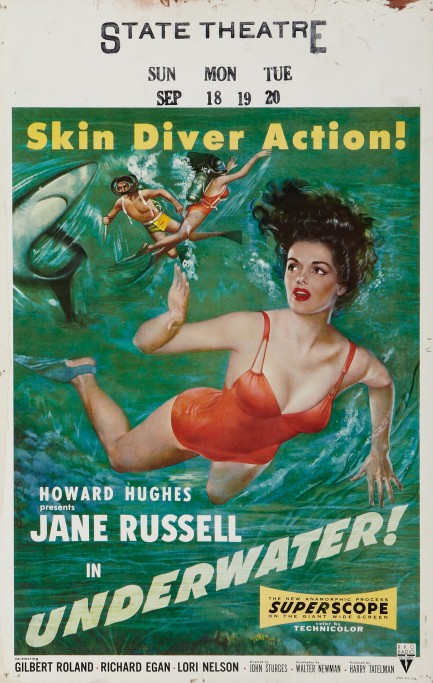
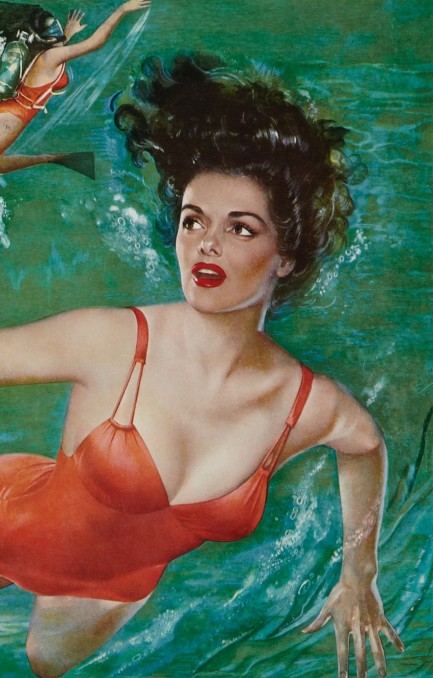































































































































 Do you have someplace I can store this suitcase filled with my excess masculine heat?
Do you have someplace I can store this suitcase filled with my excess masculine heat? Sure, you can sit next to me. But first you have to sign a liability waiver in case you get scorched.
Sure, you can sit next to me. But first you have to sign a liability waiver in case you get scorched. You'll love this next trick. I put my finger in this cognac and it catches fire.
You'll love this next trick. I put my finger in this cognac and it catches fire. Hot as this guy is, I don't know whether to keep beating on him or start beating on me.
Hot as this guy is, I don't know whether to keep beating on him or start beating on me. And once I take your face off I'll be the hot one. I'll have it all! Respect, envy, women, excellent service wherever I go! The world will be mine! Mwahh hah hah! Haaaaaaaah haha hahah!
And once I take your face off I'll be the hot one. I'll have it all! Respect, envy, women, excellent service wherever I go! The world will be mine! Mwahh hah hah! Haaaaaaaah haha hahah!